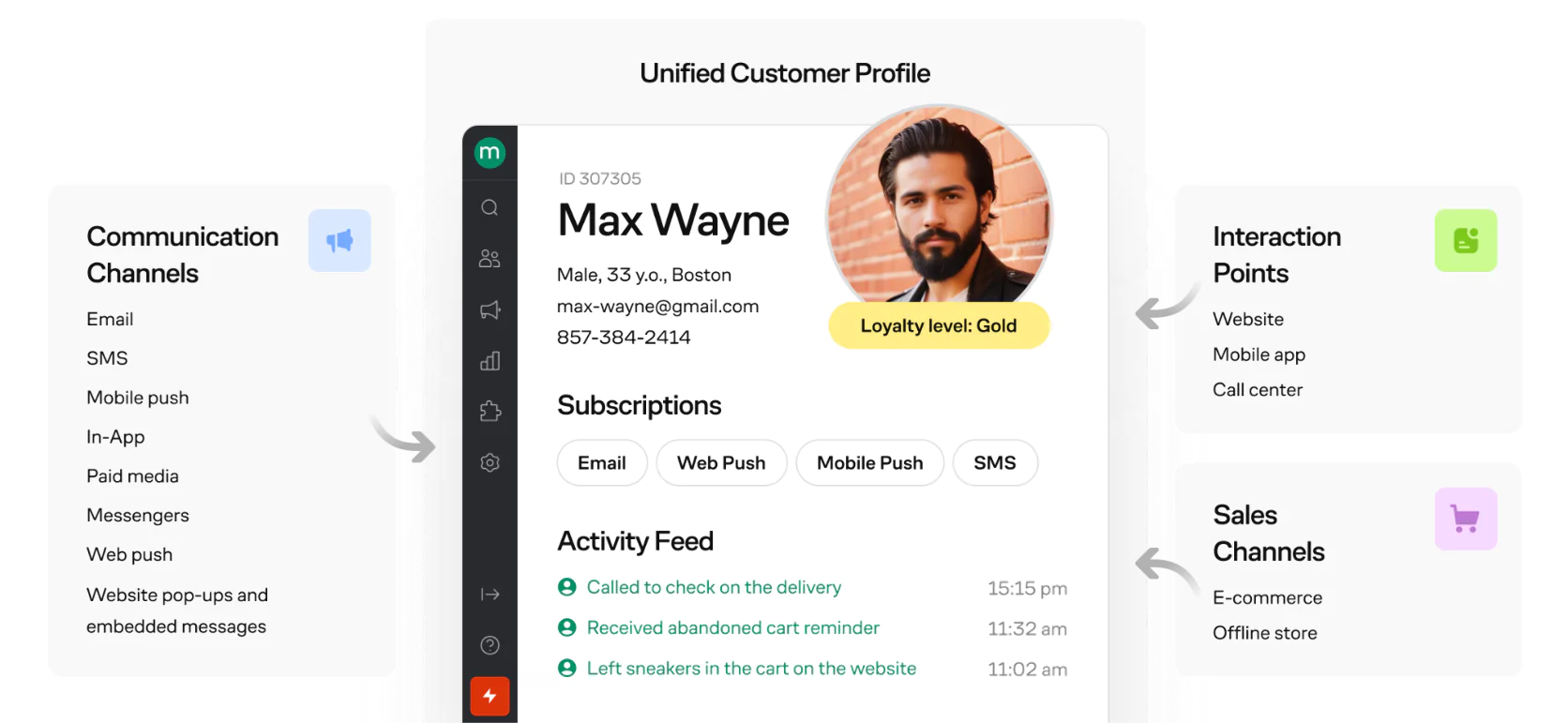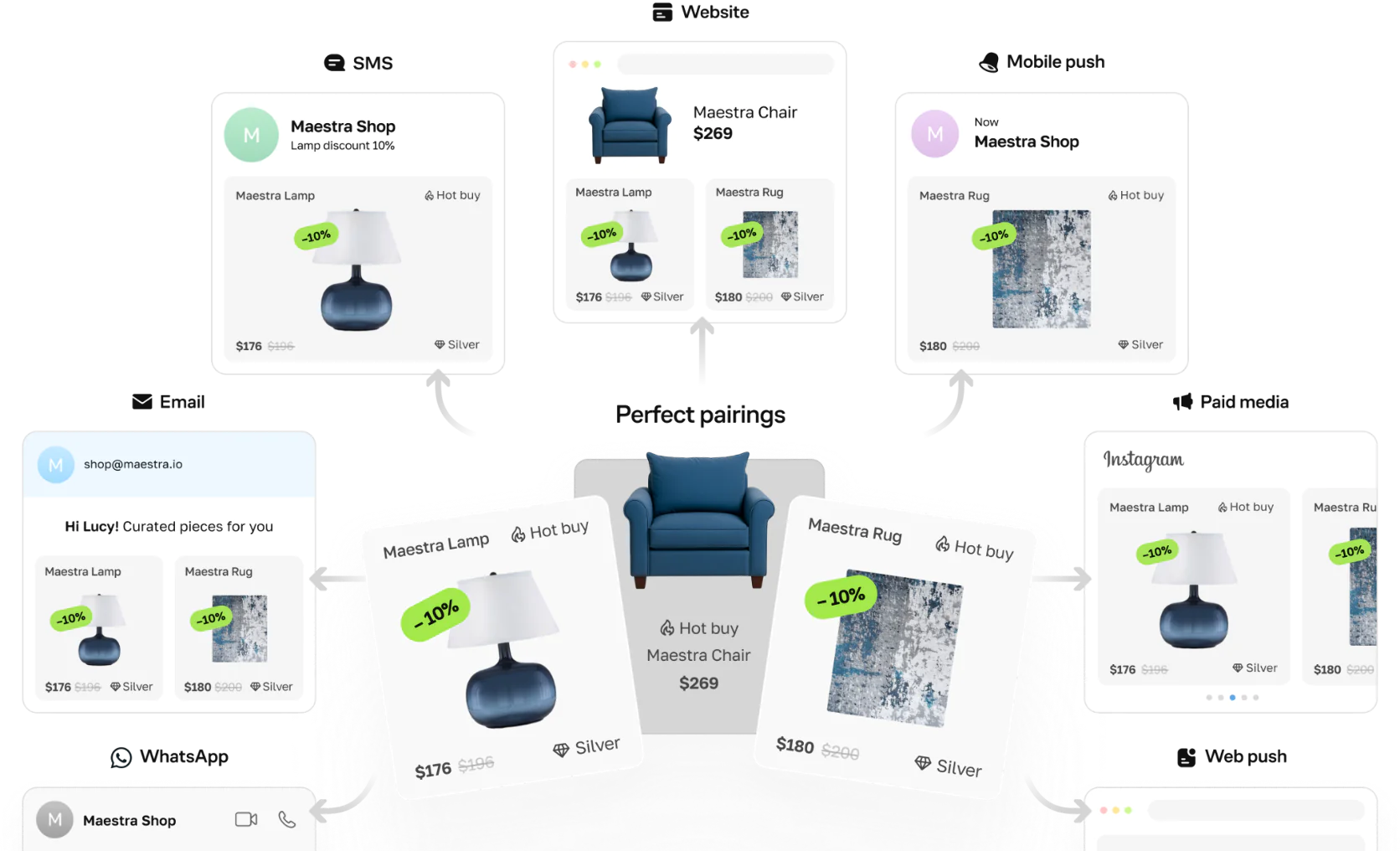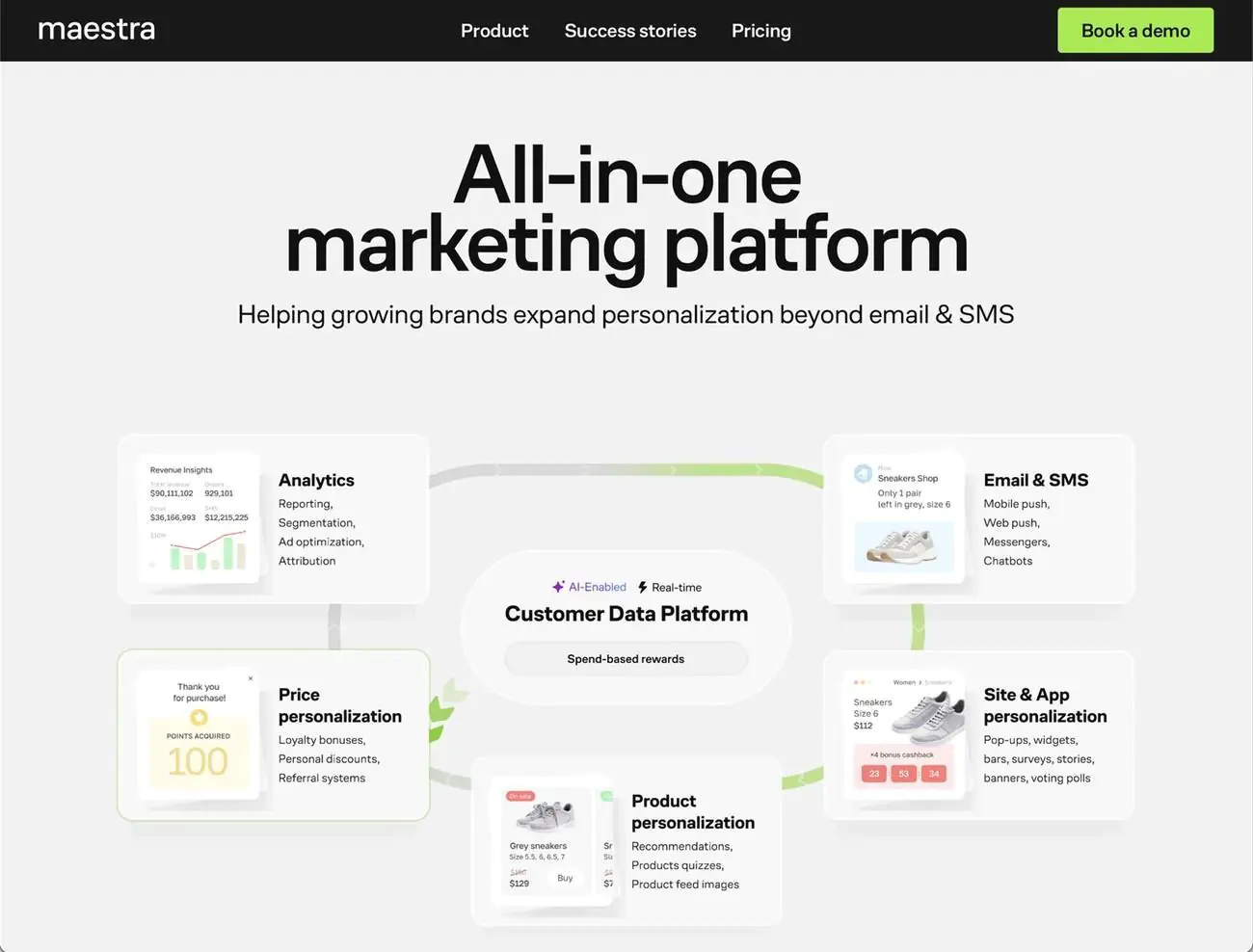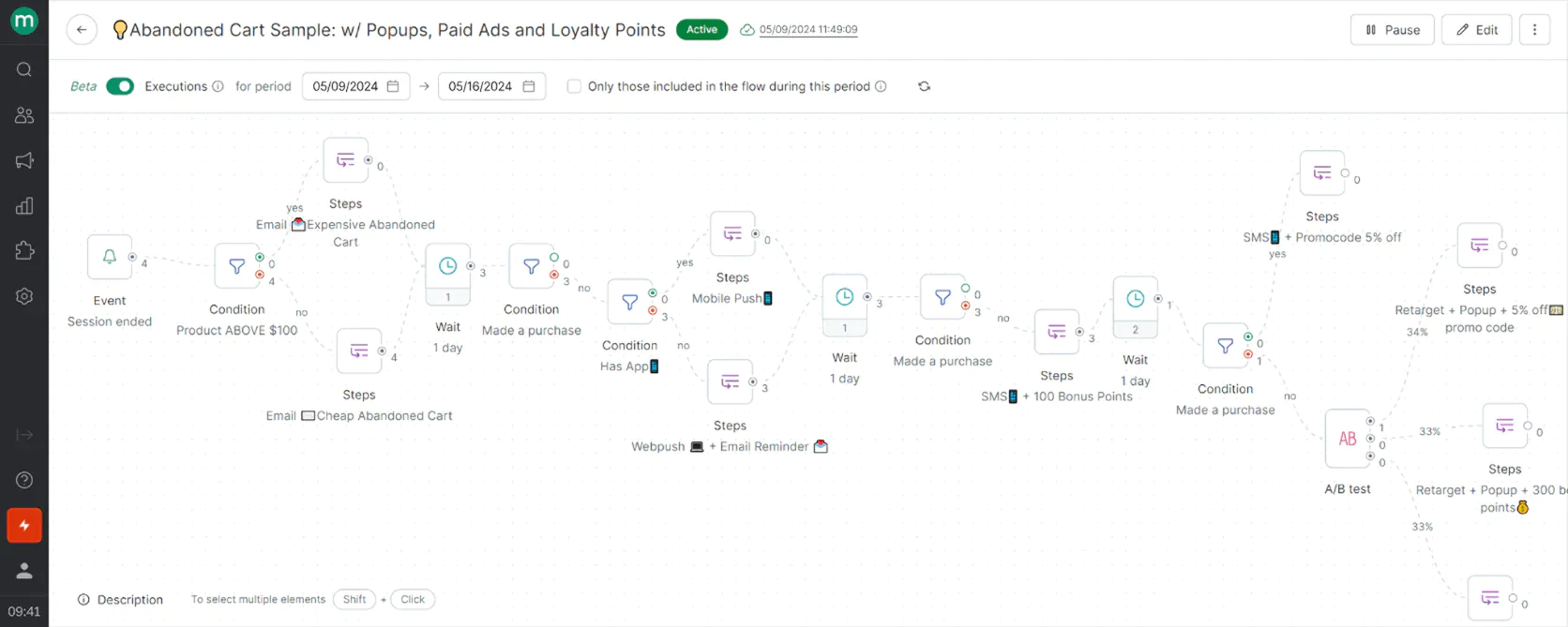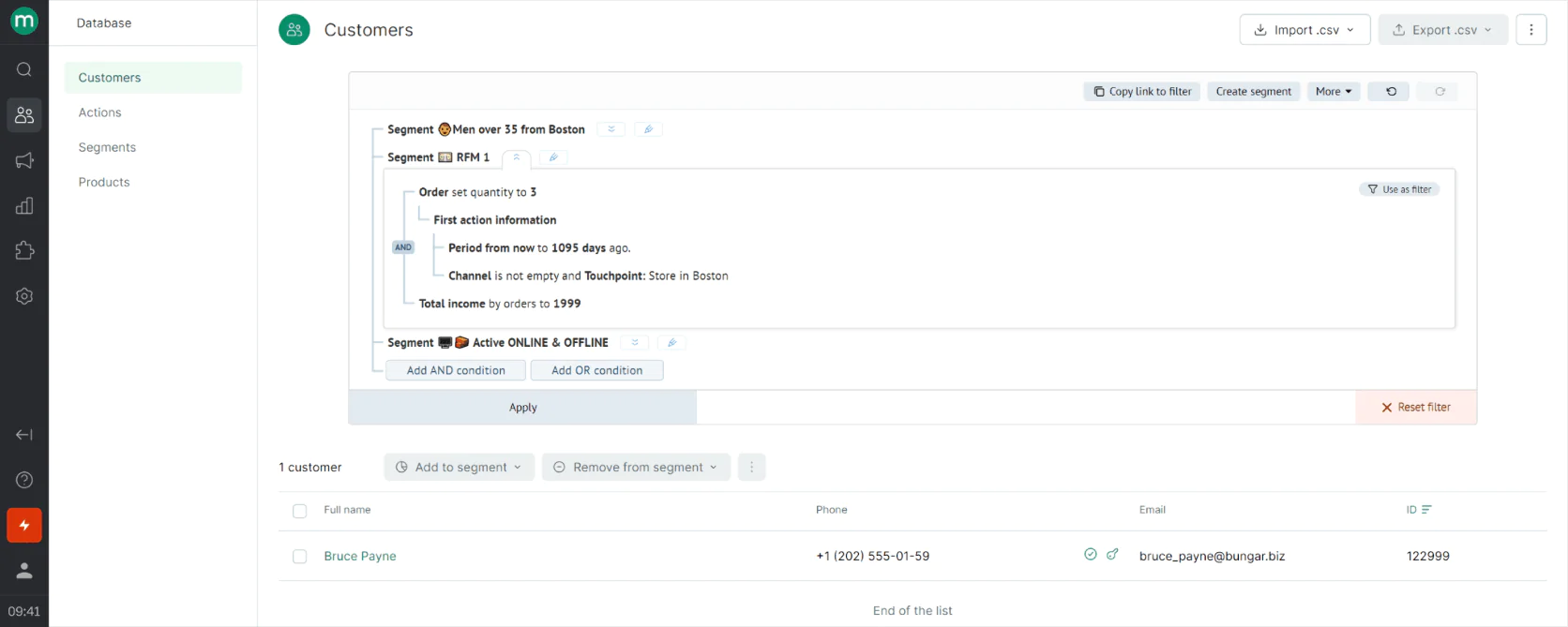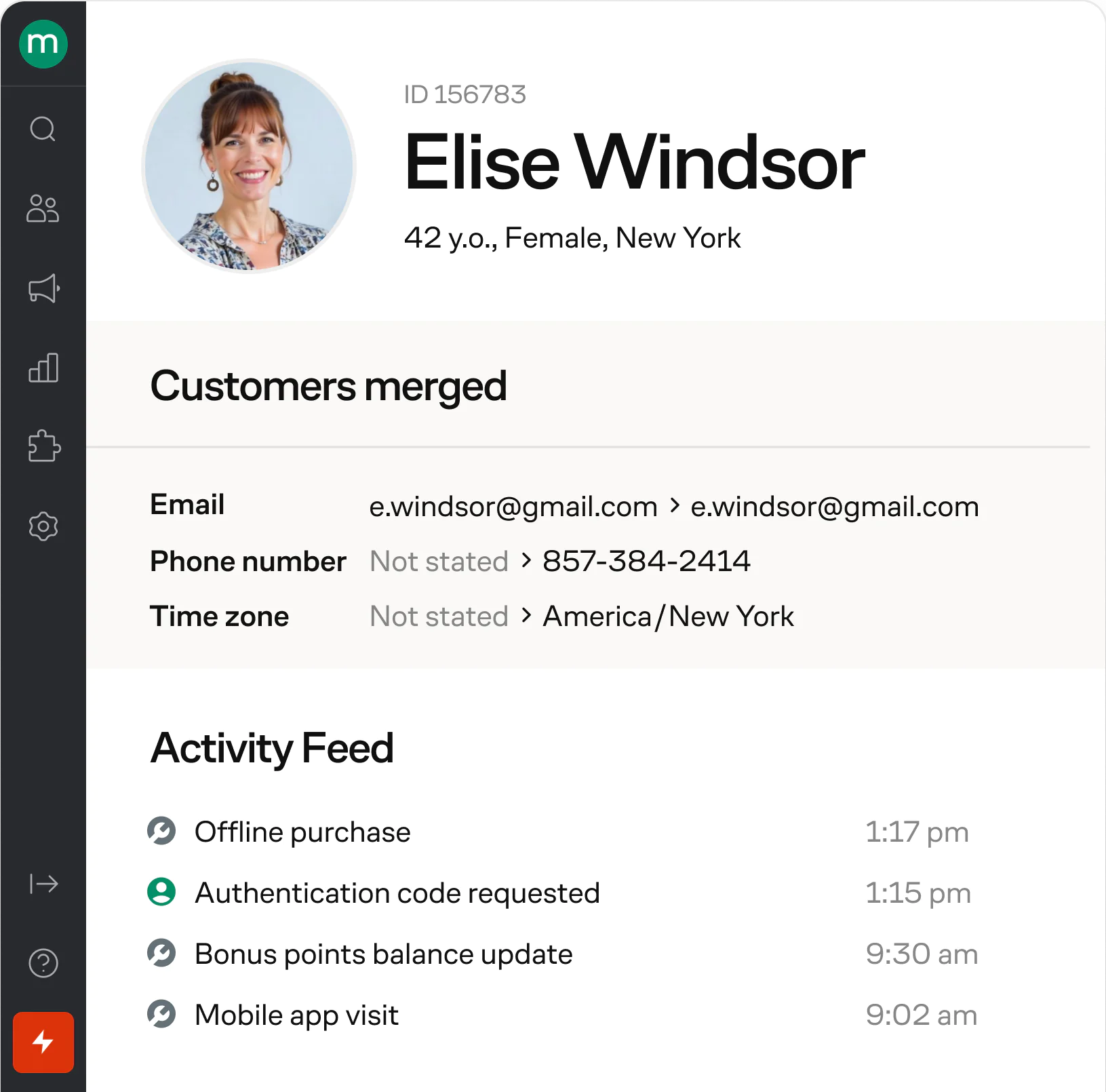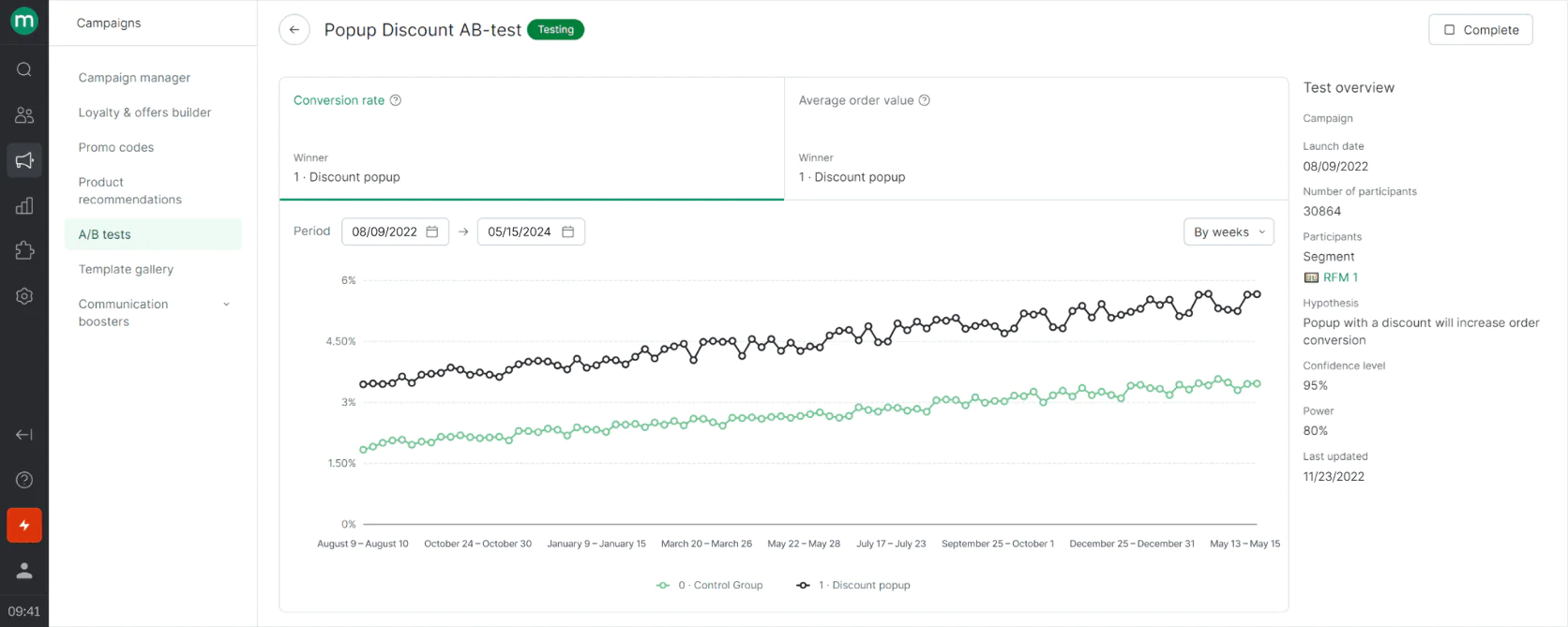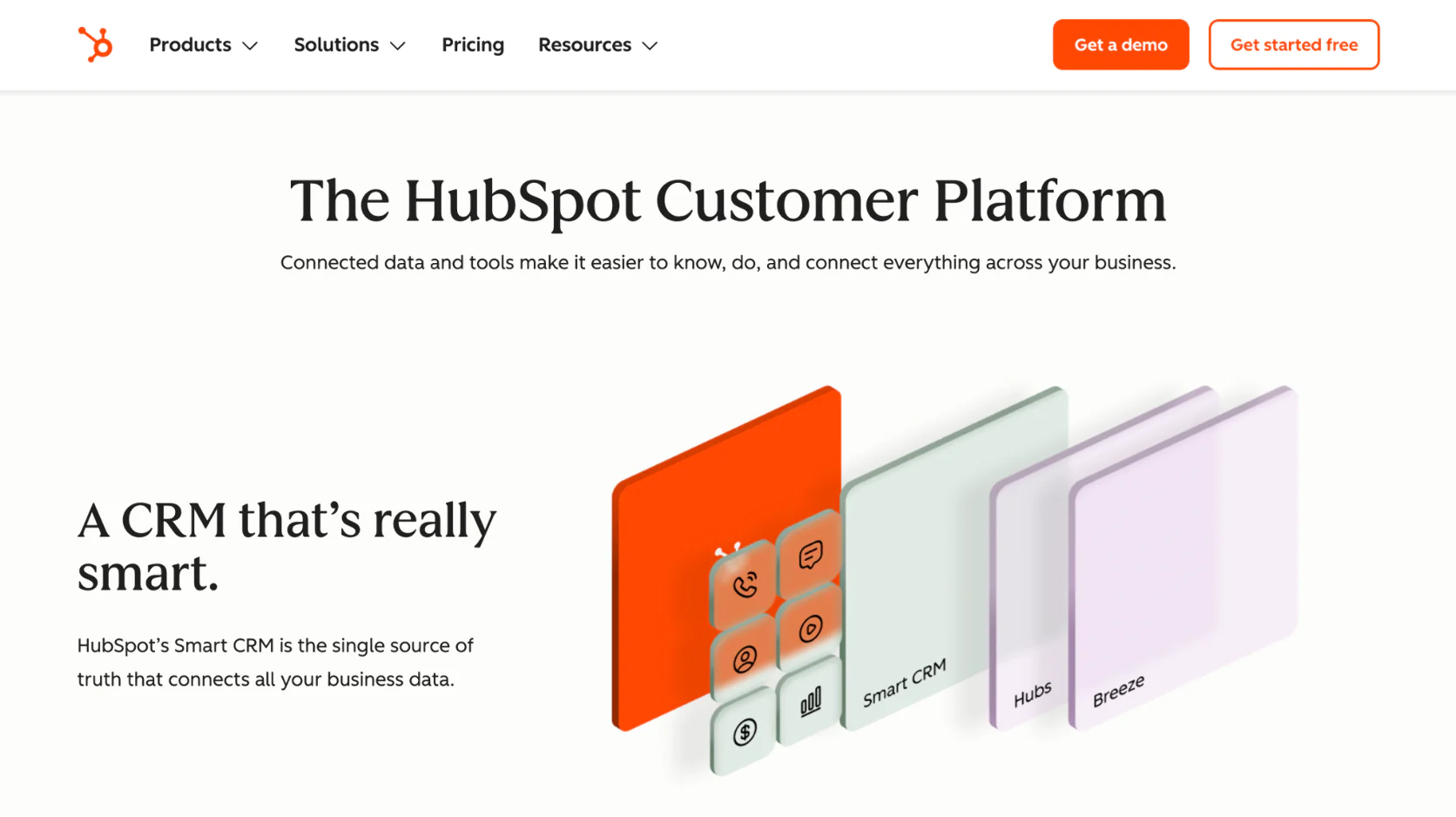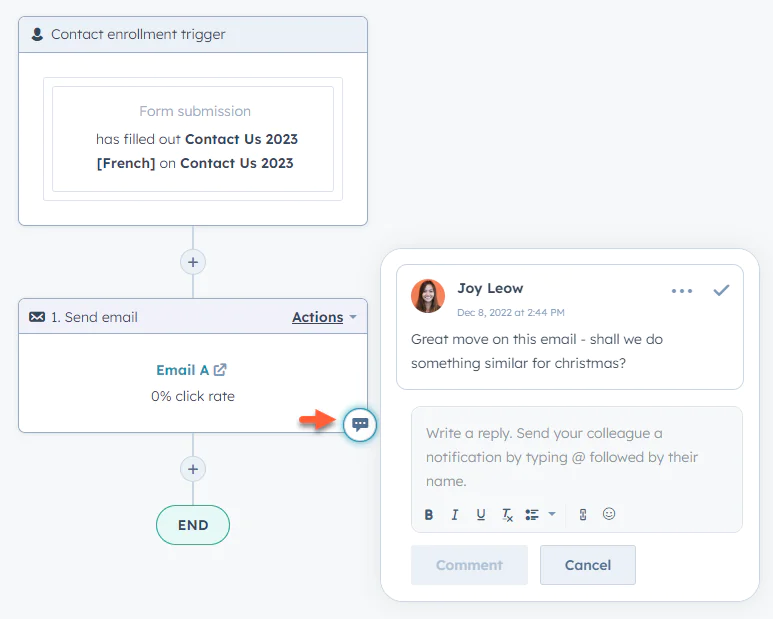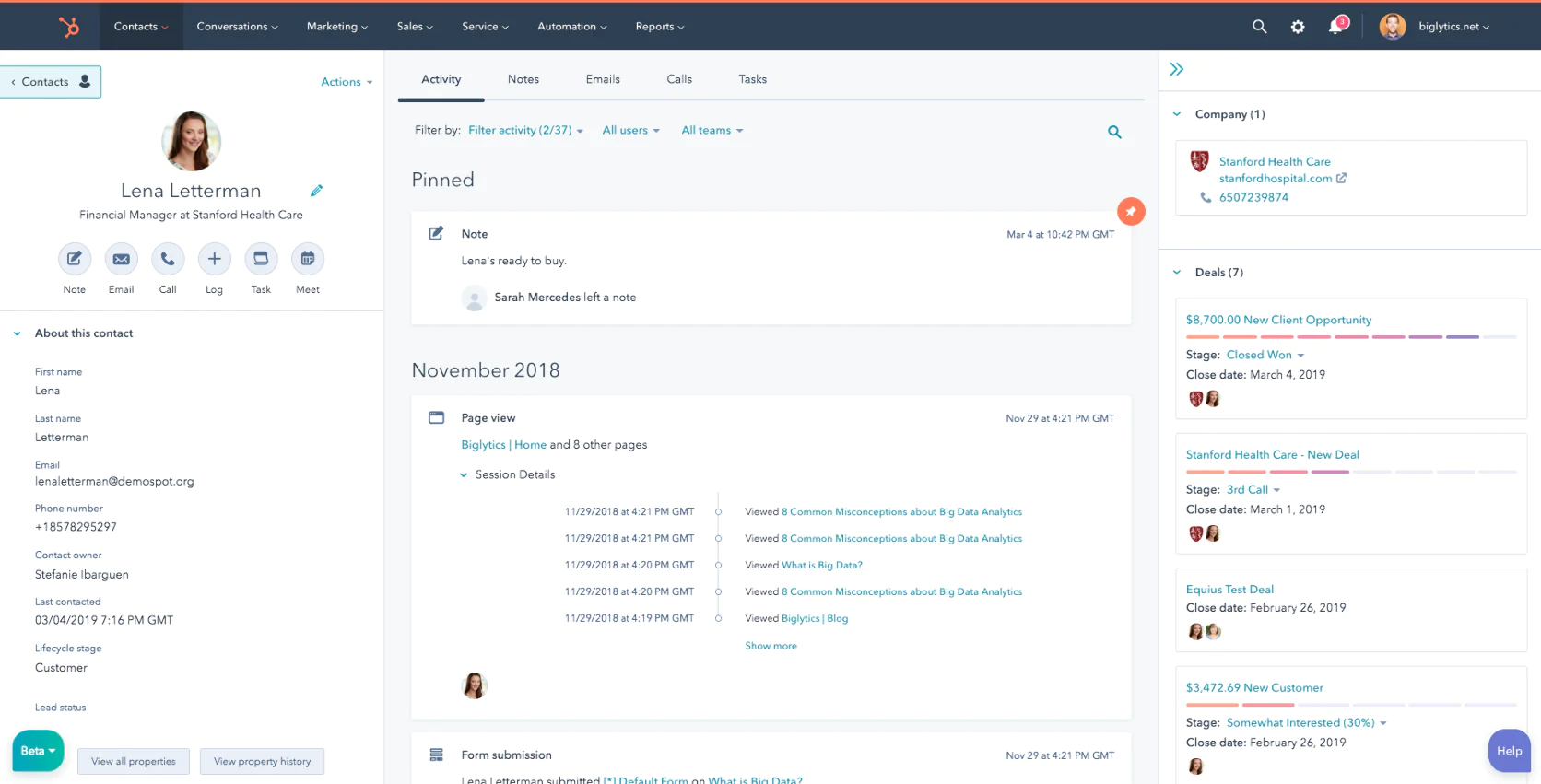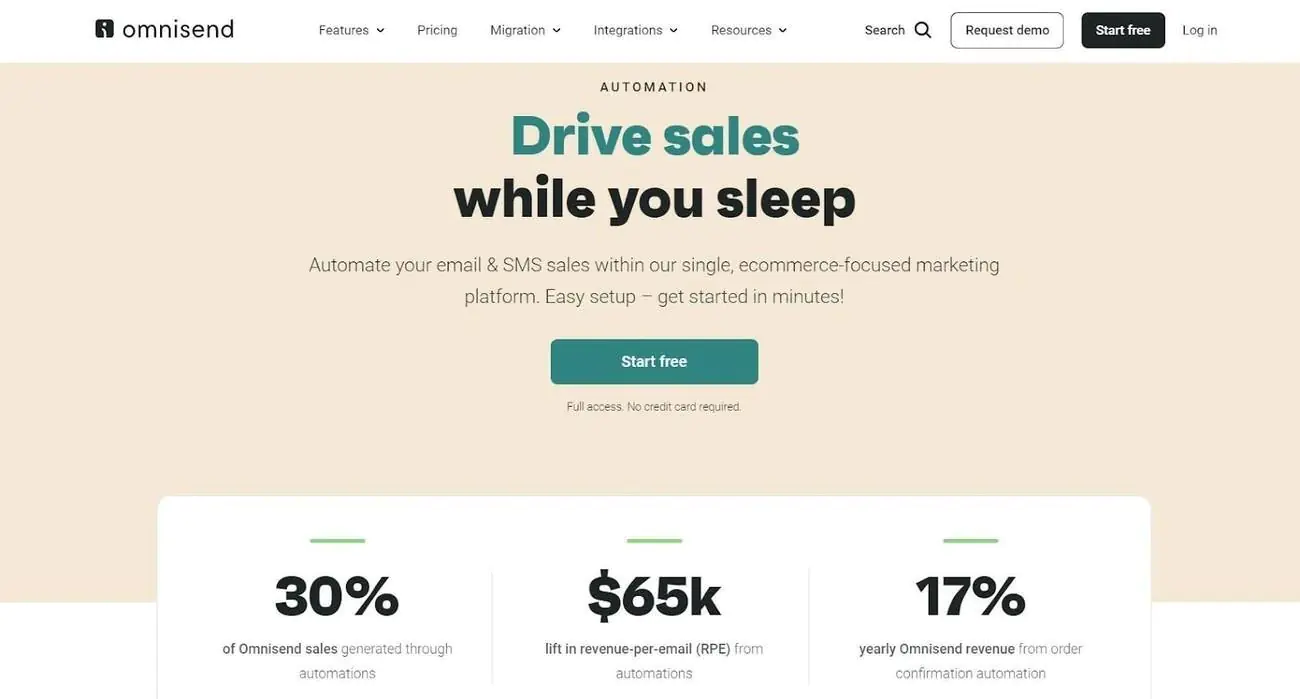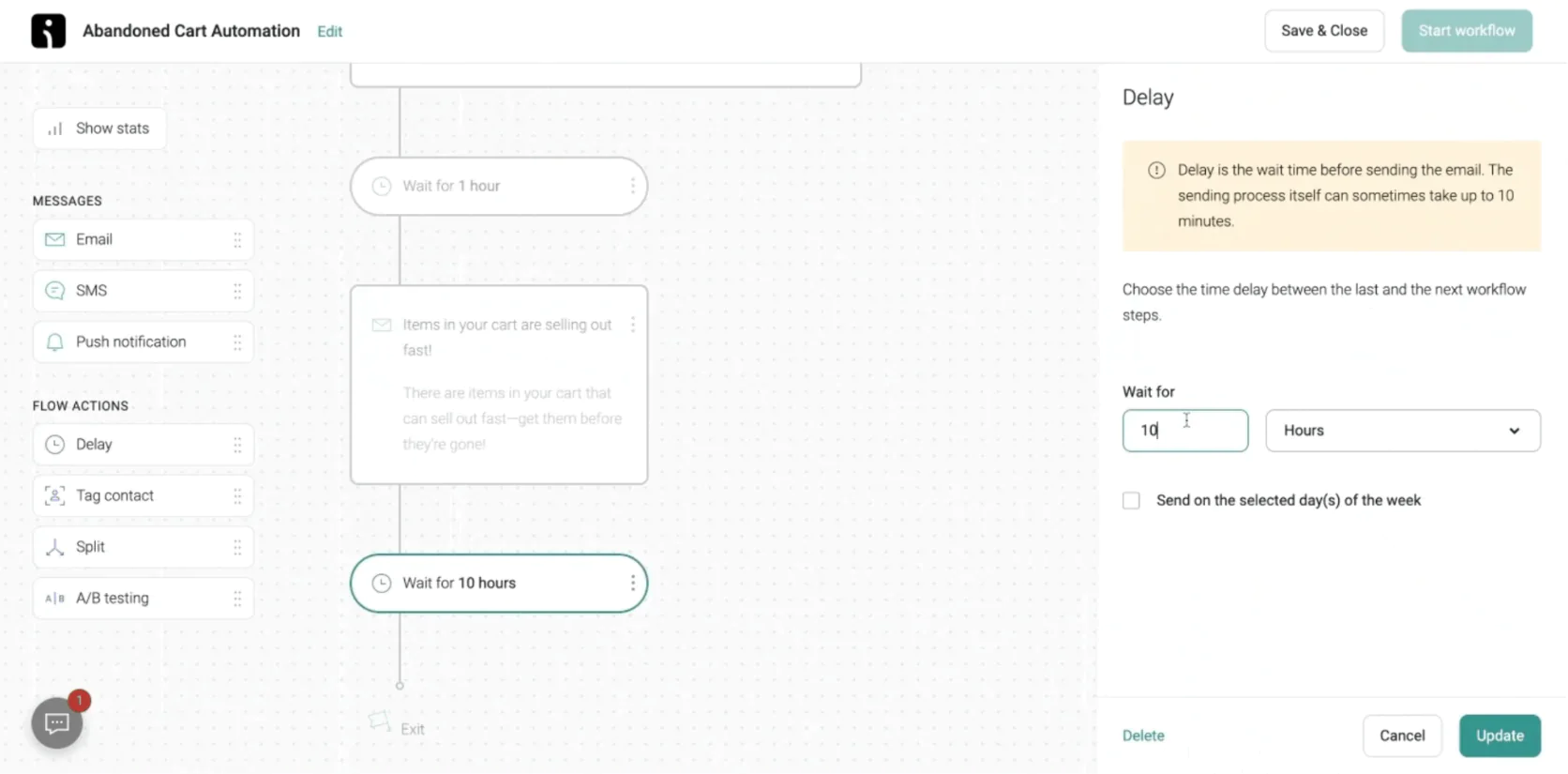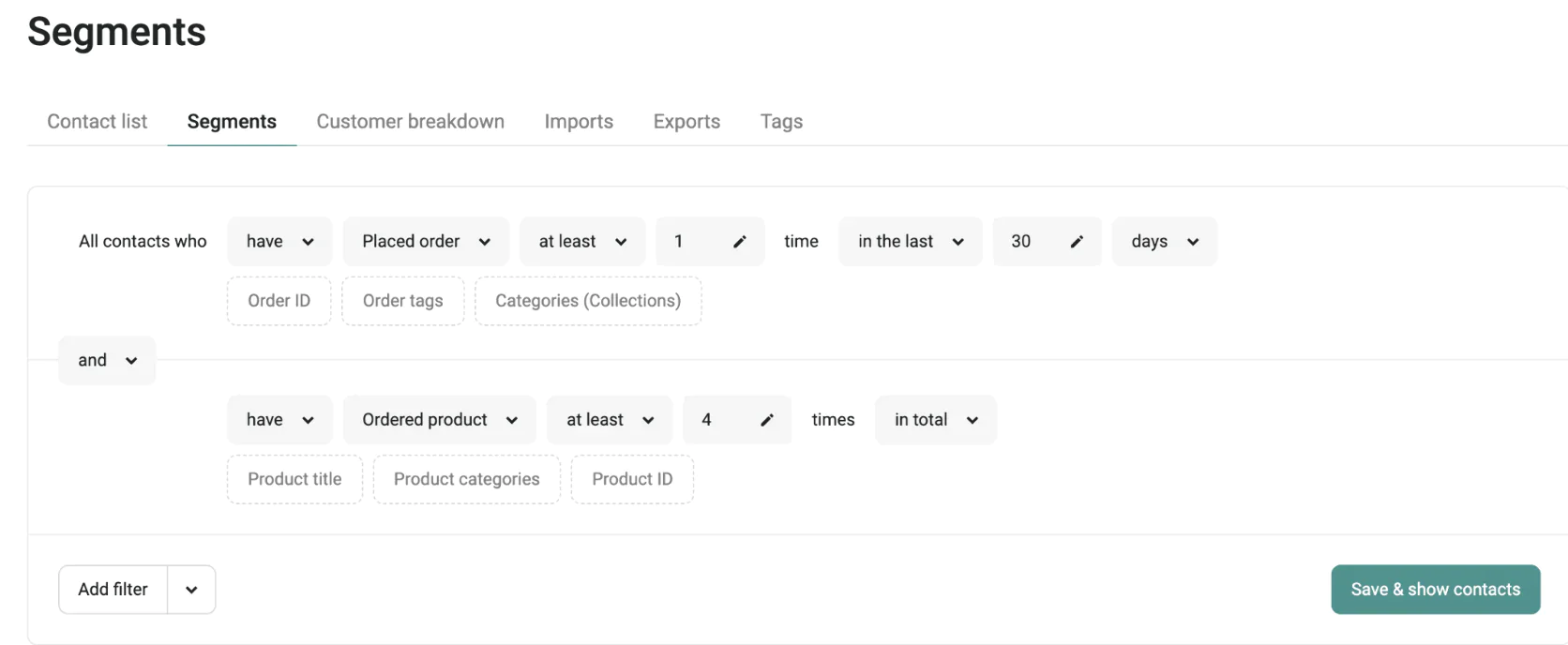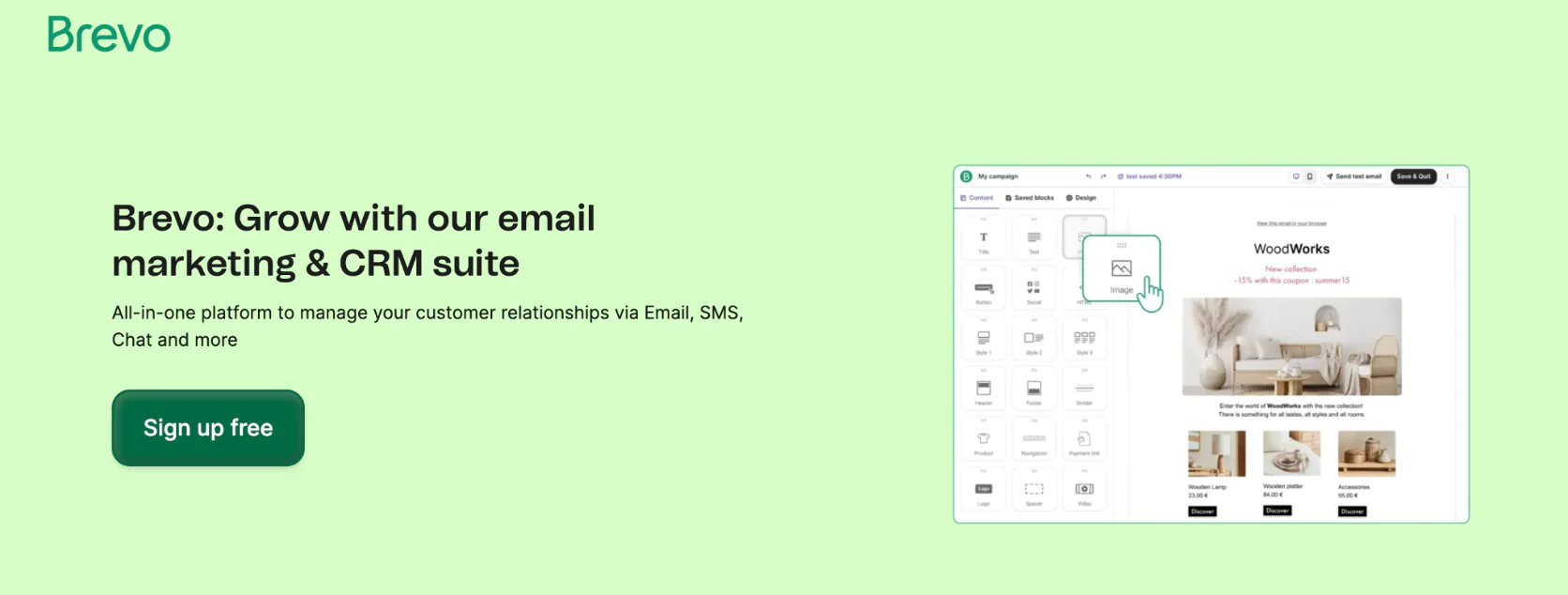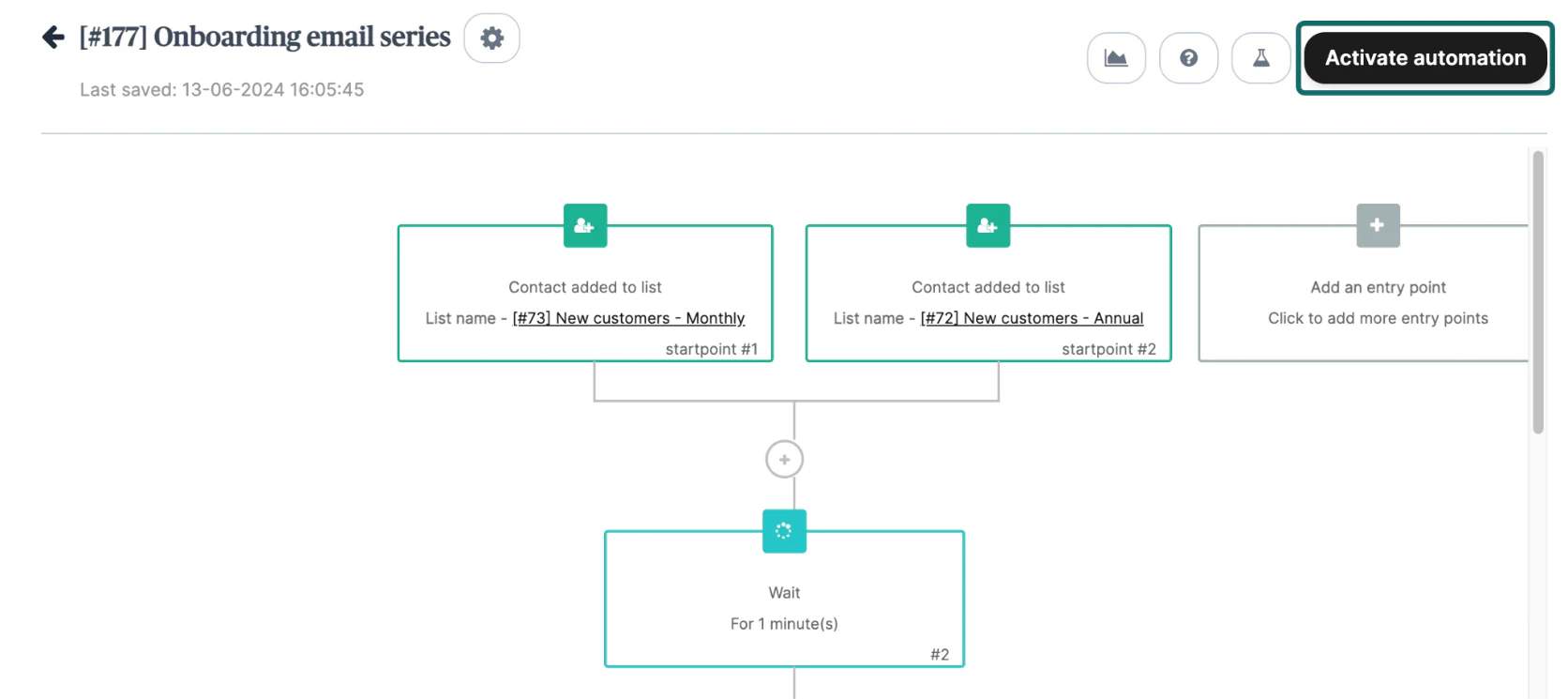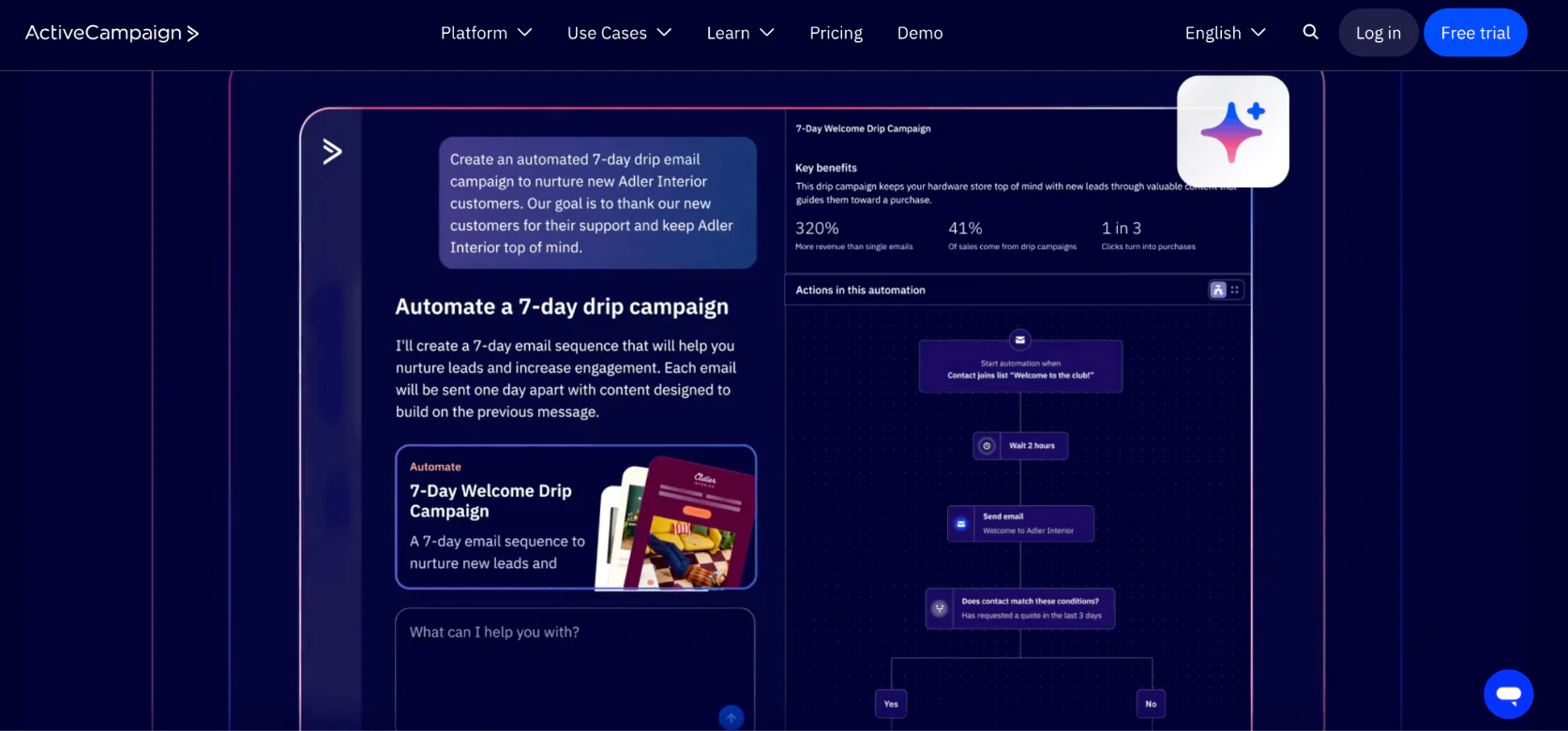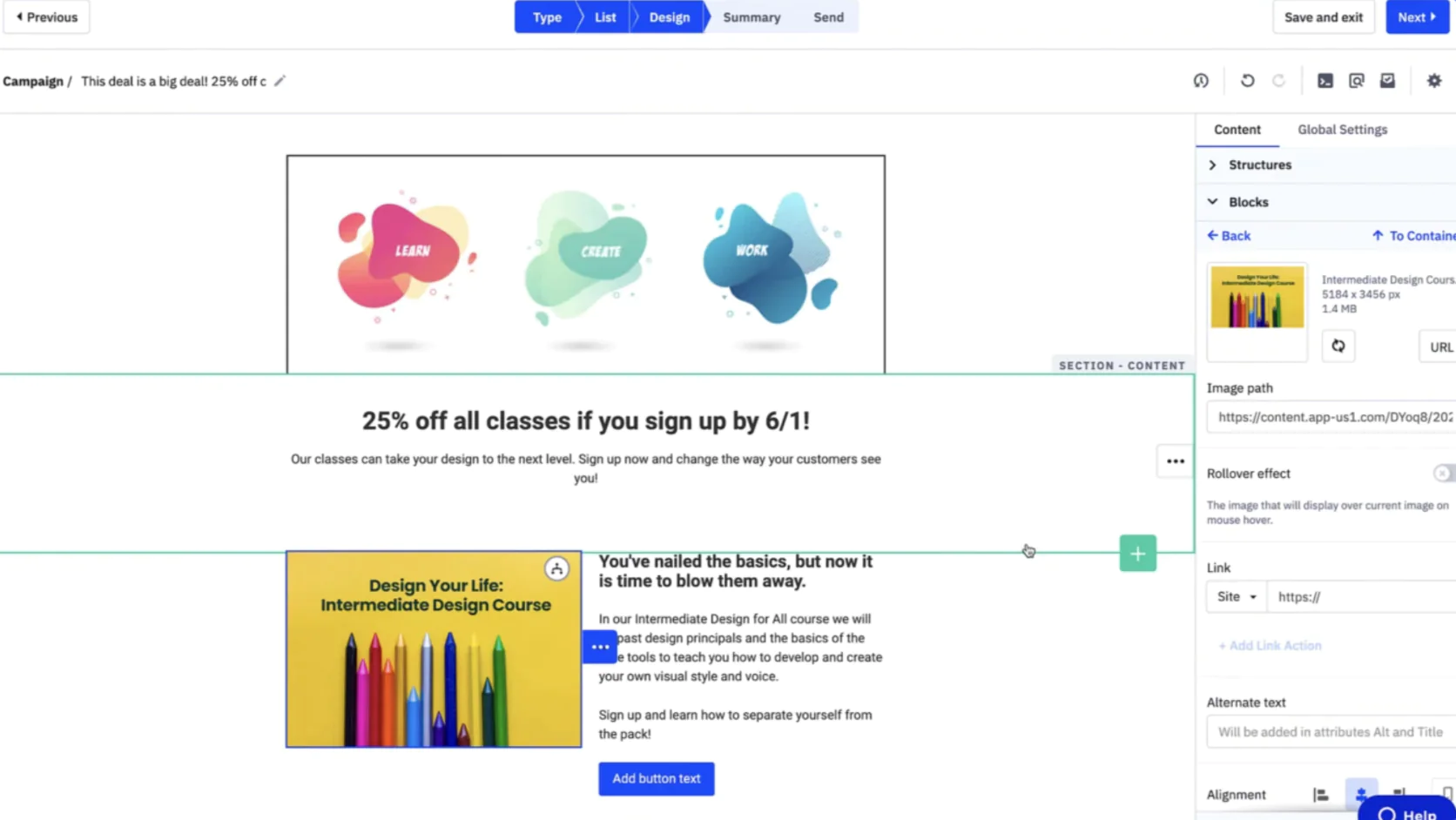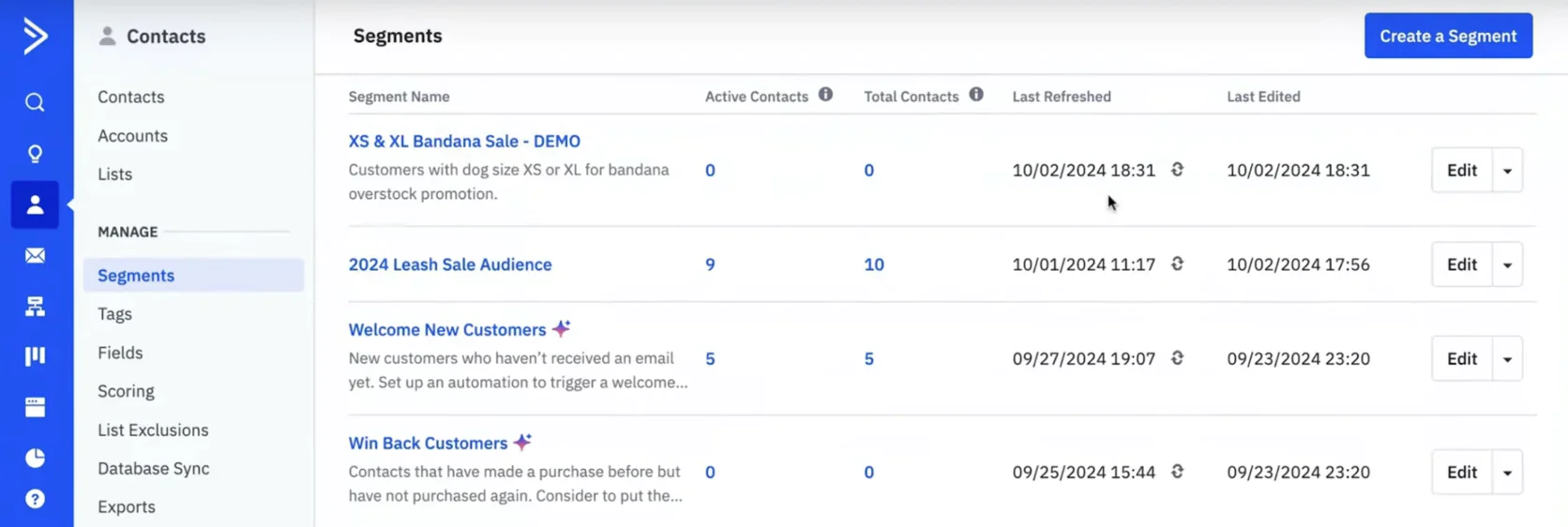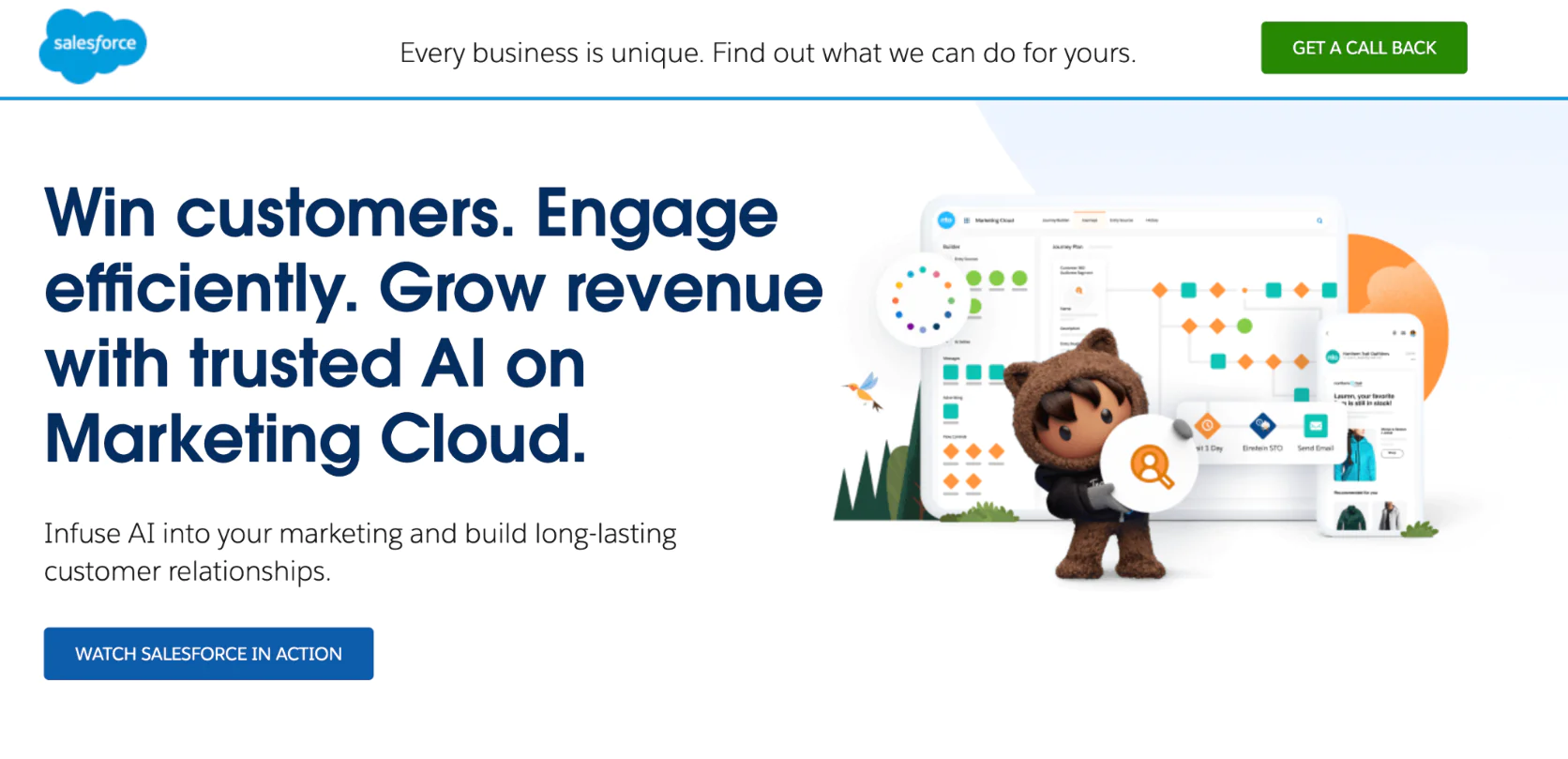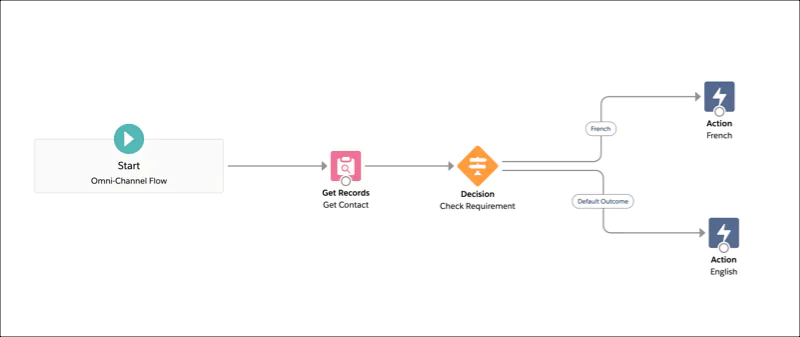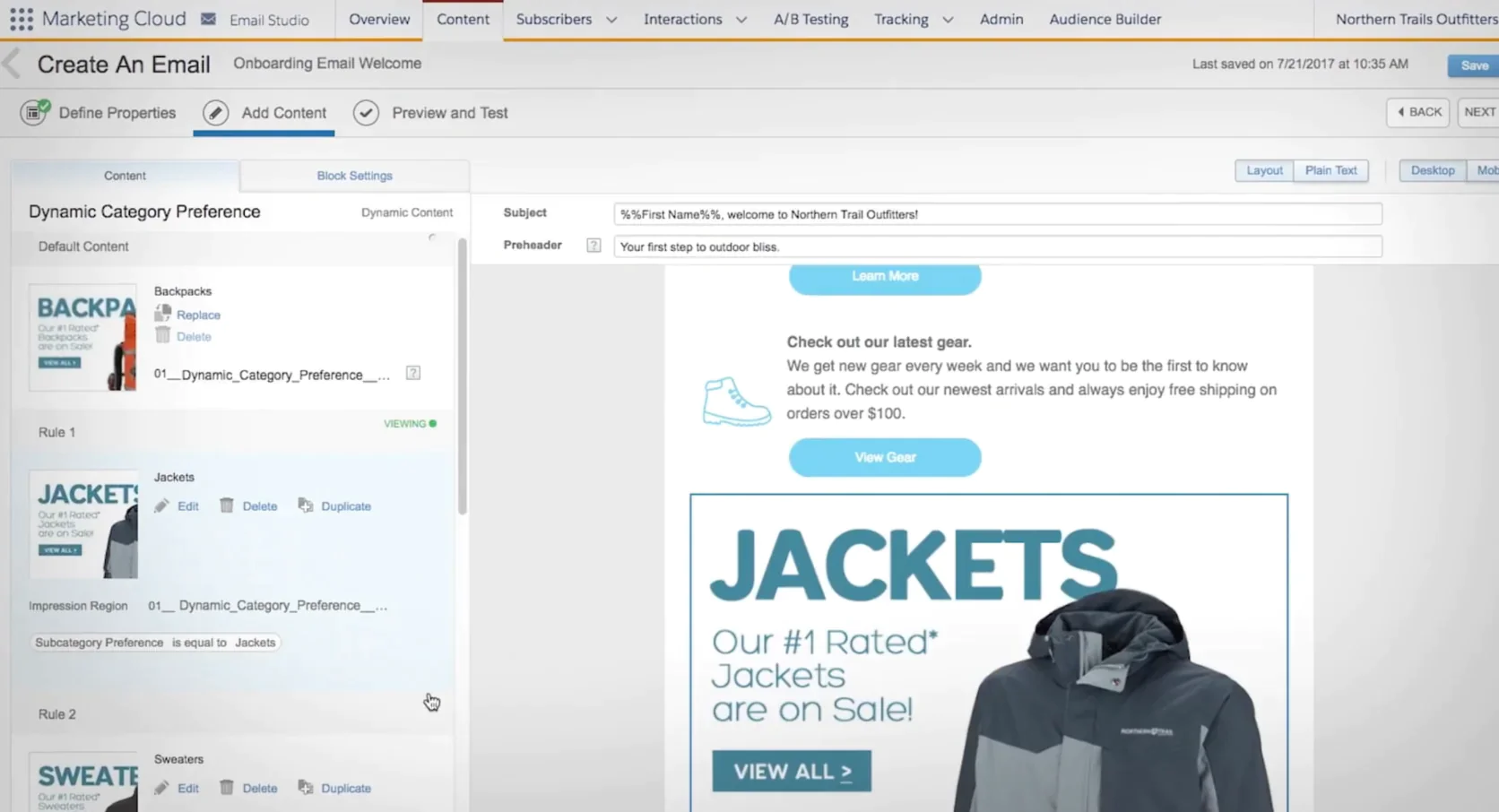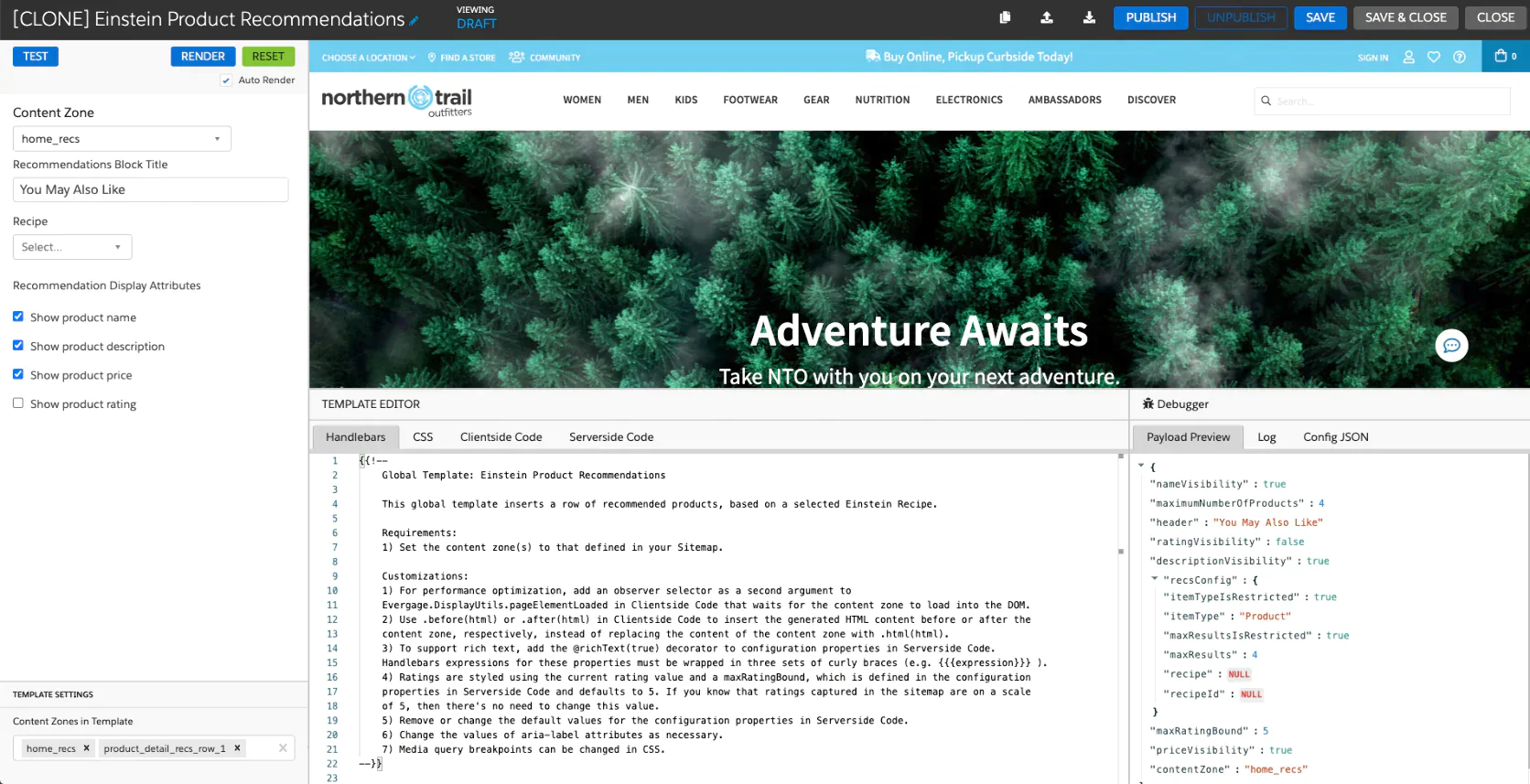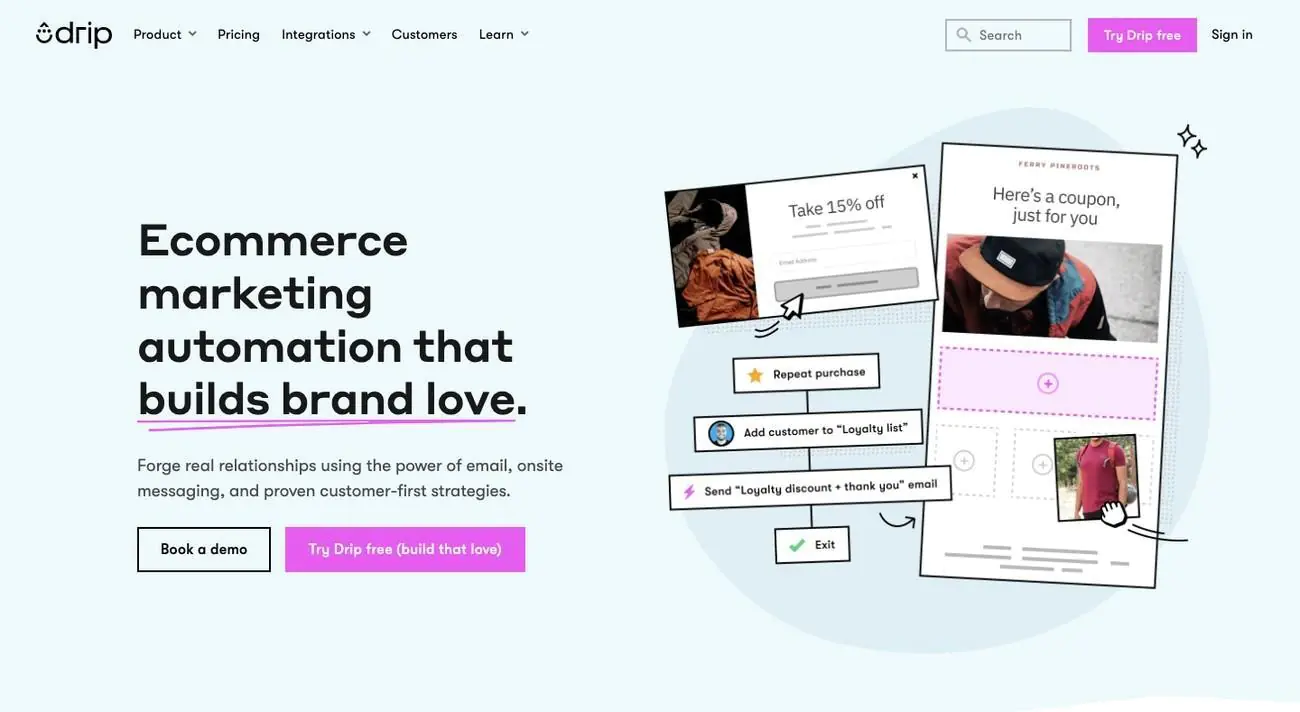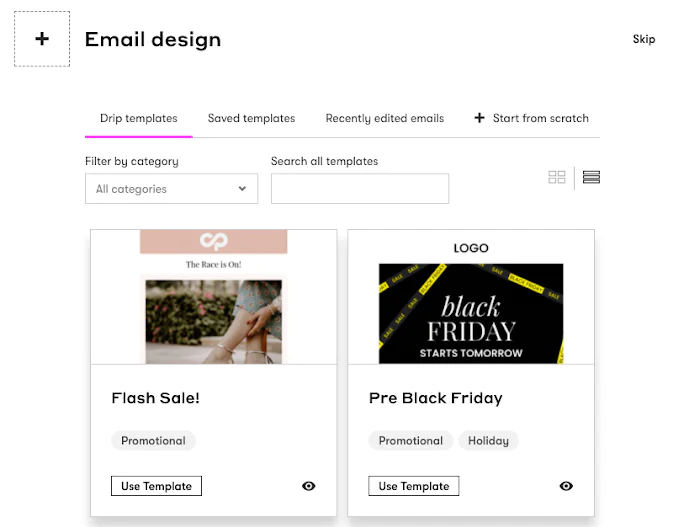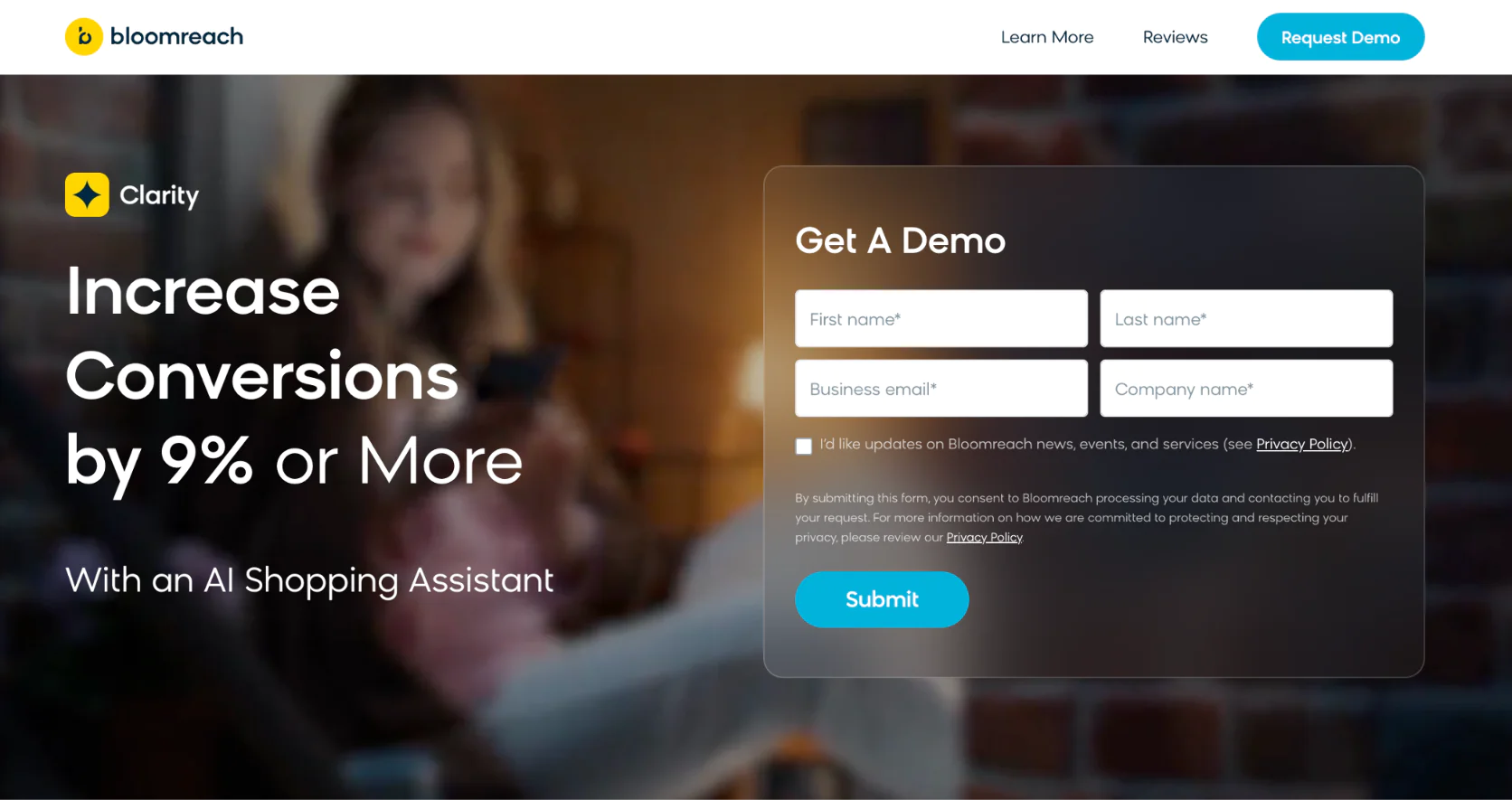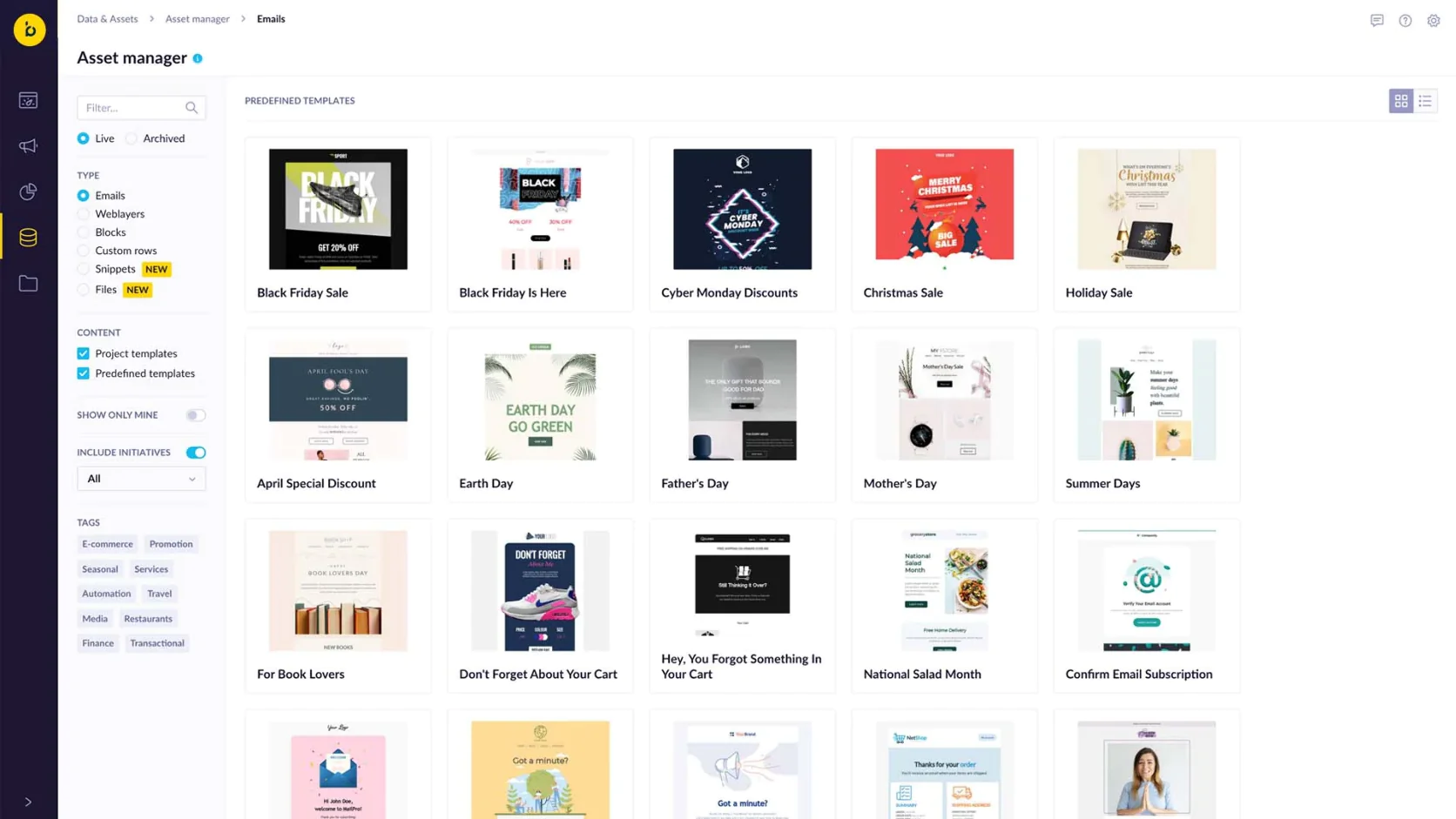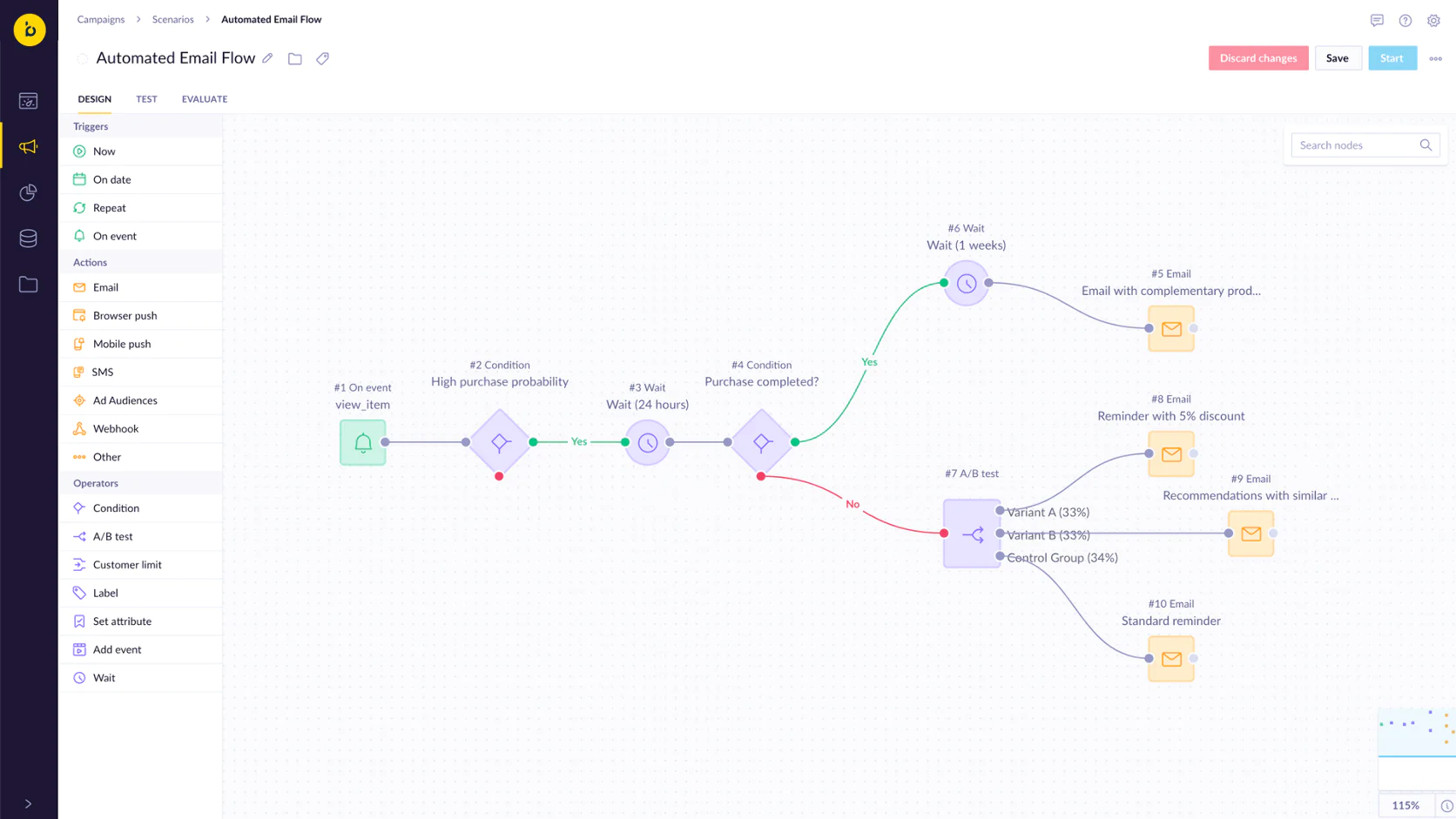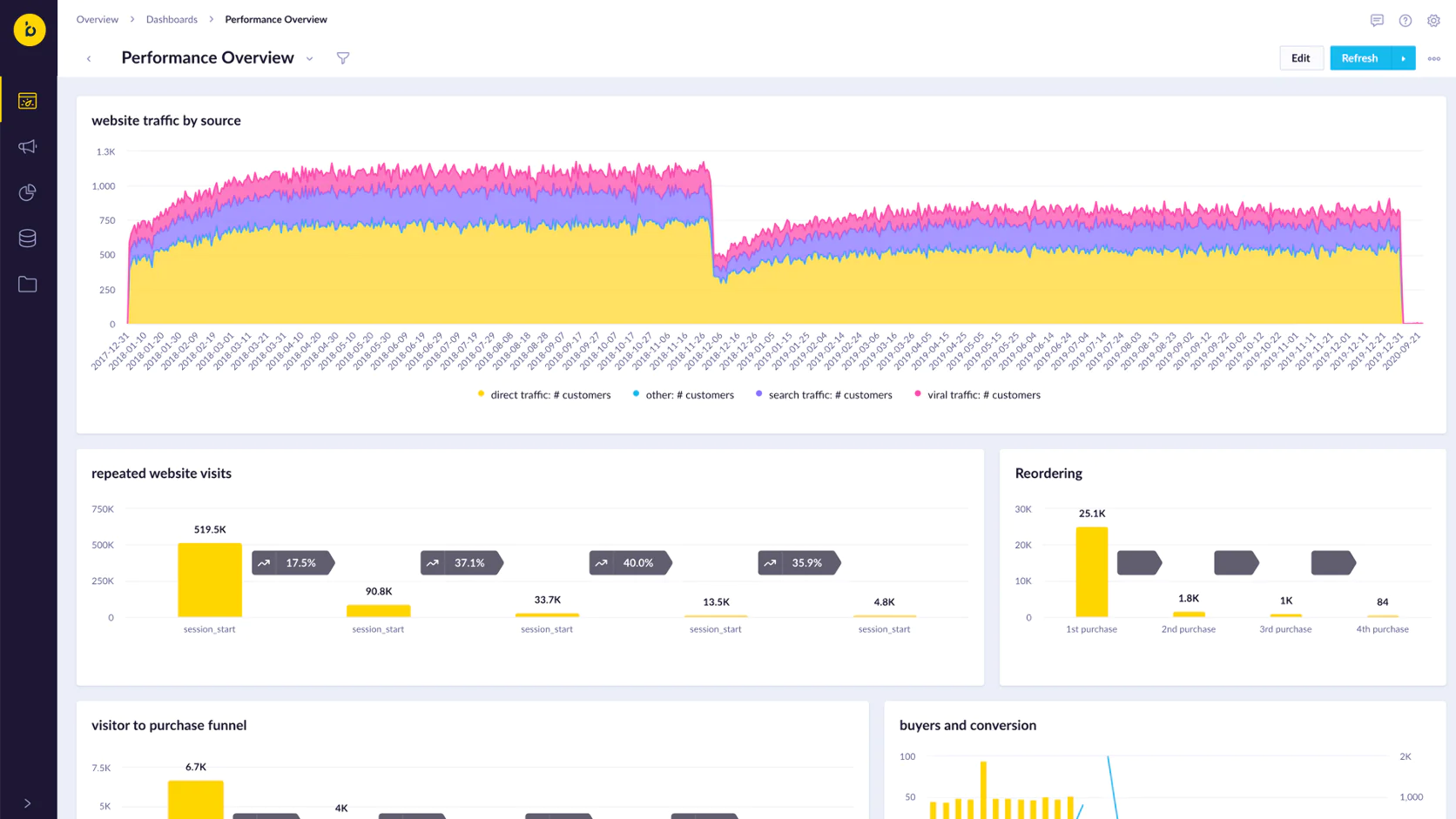8 Omnichannel Marketing Platforms That Boost Customer Engagement
Today’s customers want businesses to connect with them through email, social platforms, and other channels. Most online shoppers switch between three to five different channels before buying anything. This scattered buying pattern creates major challenges for businesses. The good news? Companies that focus on detailed omnichannel strategies can boost their yearly revenue by 9.5%. Those with basic approaches see their revenue grow by just 3.4%.
The reality looks different on the business side. Only 35% of managers felt their omnichannel personalization worked well in 2022 . This gap shows why businesses need better tools to blend customer experiences across platforms.
Finding it hard to manage your omnichannel marketing platform? You're not the only one. This piece will show you 8 powerful omnichannel marketing platforms that can change your customer engagement strategy.
What is Omnichannel Marketing Platform
Omnichannel marketing platform blends all customer touchpoints—digital and physical—to deliver tailored content throughout the customer's experience. The prefix "omni" means "all," pointing to the many ways customers connect with a company—from physical stores to websites, social media, emails, apps, and other digital spaces.
Traditional multichannel approaches run channels separately, but omnichannel platforms create a connected ecosystem. Marketers can track customer behavior across devices, customize communication instantly, and automate actions based on each customer's position.
These platforms put customers first instead of focusing on individual channels. Studies reveal omnichannel customers shop 1.7 times more often than single-channel shoppers and spend much more. Companies that use effective omnichannel strategies keep up to 89% of their customers.
Key Capabilities of Omnichannel Marketing Platforms:
Unified customer data management across all touchpoints
Live personalization based on customer behavior
Automated campaign execution across multiple channels
Consistent branding and messaging throughout the customer's experience
Advanced analytics for tracking performance and attribution
Omnichannel messaging example: A customer sees the same product recommendations across all channels
The right platform makes all the difference between disconnected and natural customer experiences. Businesses need systems built specifically for omnichannel execution. The key part of such a system is a customer data platform.
Customer data platforms (CDPs) power these systems by collecting and analyzing interaction data across touchpoints. These platforms help create tailored experiences that let customers find what they want, exactly when and where they need it.
When picking an omnichannel marketing platform, companies should evaluate integration capabilities, customization features, automation options, and analytics. The best platforms offer unified analytics that track campaign results, link sales to specific channels, and show revenue effects.
Omnichannel Marketing Platform Comparison
An omnichannel marketing platform brings together digital and physical customer touchpoints into one system. It helps businesses create tailored experiences throughout the customer's experience. These platforms let companies track how customers behave on different devices. They can customize messages live and automate actions based on where customers are in their buying experience.
Rapidly scaling retail & DTC brands
• All-in-one platform integration
• Unified customer data
• Modern UX
• Built-in loyalty and website personalization
Email, SMS, mobile, mobile and web push, messengers (WhatsApp, Telegram), chatbots, website and app, paid media (Facebook, Google, etc.) offline (POS), custom channels
• CDP with detailed profiles and records deduplication
• Advanced segmentation (nested segments, calculated fields)
• Product personalization (quizzes, bundles, AI- recommendations)
• Flexible A/B testing and detailed reporting
• White-glove support
• 5-min SLA
• Dedicated success manager handles migration, To transfer, flows building
•Weekly calls to discuss results and strategy
Growing startups to enterprises
• Integrated CRM
• Basic marketing automation
• Business Operating System
• AI-powered tools
Email, social media, chat, phone, custom channels
• Unified customer data
• Live targeting
• Personalization tokens
• AI-driven suggestions
• Tiered support based on plan
• 6 languages supported
• E-commerce focused
• Pre-built workflows
• Shoppable emails
• Strong automation
Email, SMS, push notifications, Facebook and Google ads
• 500 segmentation data points
• Dynamic content
• Conditional personalization
• 24/7 live chat & email
• 3-min response time
Small to medium businesses
Drag-and-drop editor
• WordPress integration
Email, SMS, WhatsApp, web push, live chat
• Contact attribute system
• Conditional content
• Advanced segmentation
• Support varies by plan
• 6 languages
• Self-help resources
• Advanced automation
• CRM integration
• High email deliverability
Email, SMS, WhatsApp, social media
• AI-powered nurture
• Dynamic content
• Advanced segmentation
• Tiered support
• Live chat M-F
• Training sessions
• Full-stack platform
• Journey Builder
• Einstein AI
• Complete analytics
Email, mobile, social, web, advertising
• 360° customer profiles
• AI-driven personalization
• Live adaptation
• Tiered support plans
• Third-party implementation
• E-commerce focus
• Workflow automation
• Revenue tracking
Email, SMS, social retargeting, onsite campaigns
• Dynamic segmentation
• Conditional content
• Behavior-based targeting
• Email & chat support
• Self-help resources
Large e-commerce businesses
• AI-driven platform
• Loomi AI
• Multi-market support
15+ channels including web, mobile, email
• Contextual AI personalization
• First-party data utilization
• Predictive analytics
• Multi-channel support
• Tailored workshops
Maestra is a powerful all-in-one
omnichannel marketing platform built for DTC brands who want to unite their customer data and increase e-commerce revenue. The platform helps businesses blend multiple marketing channels under one roof. This creates consistent customer experiences that lead to measurable results.
Maestra focuses on serving rapidly scaling retail businesses and DTC brands who want to optimize their marketing efforts. The platform helps companies combine their tech stack without losing enterprise-grade features. Their customers have seen amazing results like
15% website conversion growth or
22% repeat revenue growth after implementation. In addition, businesses save
up to 25 hours monthly on routine marketing tasks.
The platform works great for marketing teams who need multilingual content or manage more than one brand, and businesses that want better customer accessibility. E-commerce brands benefit from Maestra’s individual-specific communications throughout the customer’s buying process. A customer shared, "With Maestra, a single person can run an entire company’s marketing activities, and that person doesn’t even need to be particularly tech-savvy".
Maestra Omnichannel Communications
Maestra's complete channel support makes it unique. The platform combines all popular communication channels:
Email, SMS, mobile, in-app and web push notifications
Messaging apps including WhatsApp, Telegram, and chatbots
Website and app personalization tools
Offline channels through loyalty programs and in-store recommendations
Maestra’s flow example: abandoned card flow with emails, mobile and web pushes, pop-ups, paid ads and loyalty points
This unified approach stops integration problems that often ruin customer data consistency. The platform optimizes cross-channel interactions by lining up messages based on customer actions at different touchpoints. Their visual constructor makes segment setup simple without complex SQL programming or developer help.
Maestra: user segmentation
Maestra Personalization Capabilities
Maestra's Customer Data Platform (CDP) sits at its core. It collects vital data to build detailed customer profiles. This creates truly personal marketing based on behavior, location, and purchase history. The system finds and merges duplicate customer records automatically. When a customer registers on a website and later logs into a mobile app, Maestra combines this into one unified profile.
Customer profile in Maestra
Marketers can create segments with specific conditions that make customers feel personally addressed. This leads to targeted campaigns, discounts, and content that appeal to individual priorities. The platform's testing tools like A/B testing and control groups measure communication effectiveness. These help marketers make data-driven decisions.
Maestra's unique customer support puts them ahead of competitors. Every subscription includes white-glove Customer Success support. Each Customer Success Manager handles just 15 accounts, while the industry usually assigns 60+ accounts per manager. This gives clients dedicated attention.
The support package includes shared Slack channels for live collaboration. They offer a 5-minute SLA when you ask questions, weekly strategy calls, and hands-on help with migrations, flow audits, automations, segmentation, testing, reporting, and strategic recommendations. A customer mentioned, "We’re really pleased with the customer service — we’re always given prompt and helpful answers to all our questions. The team is great to work with".
All-in-one solution combining CDP, marketing automation, loyalty, and product personalization
Less specialized for mobile app-first businesses compared to platforms like Braze
Dedicated strategic guidance through assigned Customer Success Manager
Not as deeply integrated with Salesforce ecosystem as Salesforce Marketing Cloud
Built specifically for e-commerce use cases with retail-focused features
Strong personalization capabilities across email, SMS, push, web, and ads
Native loyalty program management eliminates need for separate systems
Unified customer data across all touchpoints without requiring external CDP
Maestra delivers real results. Customers typically see 5-15% more revenue, 5-15% better website conversion rates, and up to 40% higher average order values. The platform offers a strong solution for businesses wanting to combine their marketing tech stack while keeping enterprise-grade capabilities.
HubSpot’s comprehensive CRM platform unifies multiple business functions to deliver an exceptional omnichannel marketing experience. The platform’s customers see remarkable results after their first year — for example, 129% more leads or 36% more deals closed.
Businesses looking for an integrated customer engagement approach will find HubSpot highly effective. The platform acts as a Business Operating System (BOS) that brings marketing, sales, customer service, and operations together in one place. The Starter Customer Platform serves startups and small businesses well. The integrated Enterprise Customer Platform helps larger companies balance power and usability.
On top of that, HubSpot shows its strength when businesses need centralized campaign planning and execution. Clearwing's success story proves this by bringing together data, asset management, and campaign performance tracking.
HubSpot Omnichannel Communications
Service Hub gives teams the power to respond quickly on multiple channels. Customer conversations stay in context whether they move from social media to email or switch between chat and phone. Support teams can switch channels within the same ticket to create a smooth support experience.
The platform merges with popular messaging platforms through APIs - WhatsApp, Slack, and custom channels. This foundation helps create consistent and personal customer interactions at every touchpoint.
HubSpot Personalization Capabilities
The platform brings together customer data and targets audiences immediately.
Customer’s record in Hubspot
Personalization tokens stand out as a useful feature. These dynamic placeholders customize marketing content based on each user’s priorities and behaviors. Marketing teams can add these tokens to emails, landing pages, and website content without coding skills. The platform’s AI helps find audience groups that respond well to personal content and suggests appropriate changes.
Support options vary by subscription level. The Knowledge Base and community forums are open to everyone. Starter subscribers get chat and email support, while Professional and Enterprise users have phone support.
Users can get help in six languages: English, French, German, Japanese, Portuguese, and Spanish.
Makes marketing automation and operational processes powerful
Complex pricing structure with many plans and tiers
Works with over 1500 business apps through its marketplace
Paid plans are needed for live support
Gives AI-powered content creation tools in the free plan
Costs increase significantly as businesses grow
Has a mobile app to manage customer relationships anywhere
Advanced features take time to learn
Most plans need annual contracts without early exit options
Notwithstanding that, HubSpot remains strong in the omnichannel marketing platform space, though it falls short of Maestra's dedicated customer support or efficient unified marketing approach.
Omnisend provides a complete marketing automation platform tailored for ecommerce businesses that makes customer outreach easier across multiple channels. Since 2014, this platform has grown to serve more than 100,000 customers worldwide. Most users are small and midsize online stores that need better ways to boost sales through tailored communications.
Online retailers who want to increase revenue through targeted marketing campaigns find great value in Omnisend. Shopify users rate the platform 4.7 stars on the Shopify App Store. The platform's ecommerce-focused features help businesses automate customer touchpoints from welcome messages to cart recovery and customer reactivation. Data shows that Omnisend users generate 39% of their sales through automation alone. This makes it a great choice for stores that want to reduce manual marketing tasks.
Omnisend Omnichannel communications
The platform lives up to its name by creating unified customer experiences across multiple channels. Omnisend supports:
Email campaigns with professional templates and drag-and-drop editors
SMS marketing for time-sensitive offers
Push notifications
Facebook and Google ads retargeting through built-in segment sync
Omnisend’s prebuild abandoned cart automation
Merchants can combine channels within the same automation workflow. They might send an email first and follow up with SMS for non-openers. This approach helps businesses keep their messaging consistent on every channel where customers interact with their brand.
Omnisend Personalization Capabilities
The platform's robust segmentation capabilities make personalization stand out. Omnisend offers up to 500 segmentation data points that cover customer descriptive data, engagement metrics, shopping behavior, and website activity. These insights help create targeted campaigns that connect with customer needs.
Omnisend’s segment builder
Dynamic content blocks and conditional personalization based on customer attributes allow messages to adapt to each recipient.
Omnisend's customer service shines as one of its best features. Every user gets 24/7 live chat and email support, even those with free plans. Response times average under three minutes, and the company has earned a Stevie Award for outstanding customer support.
Customers who spend at least $400 monthly work with dedicated account experts who provide regular business reviews.
Purpose-built for ecommerce with specialized features like shoppable emails
Interface takes time to master compared to competitors
Free plan available with access to most features
Fewer email template options than other platforms
Affordable pricing starts at $16/month
Strong automation capabilities with pre-built workflows
Excellent integration with major ecommerce platforms
Brevo, which started as Sendinblue, has grown into a versatile marketing platform that offers affordable solutions to businesses of all sizes. The platform uses volume-based pricing instead of contact-based pricing and lets you have unlimited contacts even with its free plan.
Small to medium-sized businesses looking for affordable marketing automation will find Brevo particularly useful. The platform grows with your business, supporting everyone from startups to large enterprises that run multichannel campaigns.
Small businesses can benefit from pre-designed email templates and an accessible interface. Medium businesses can create marketing automation workflows, while large enterprises can use Brevo's multichannel features and immediate analytics to make their marketing better.
Brevo Omnichannel communications
Brevo stands out with its integrated communication options that span email, SMS, WhatsApp, web push notifications, and live chat. Businesses can create seamless customer experiences by connecting these touchpoints instead of managing them separately.
Brevo’s automation builder
You can improve email campaigns with SMS follow-ups, and manage both from one interface. The WordPress plugin boasts over 80,000 active installations with 4.5 stars and makes form creation and list syncing easier.
Brevo Personalization Capabilities
The platform’s contact attribute system offers some personalization options. Marketers can add dynamic placeholders that insert specific information like first name, email, and phone number into messages. Beyond simple personalization, you can create conditional content that shows information based on specific traits like gender or priorities.
The platform’s segmentation tools help divide contact lists by behavior, personal priorities, or location—which makes campaigns more relevant to each recipient.
Support quality depends on your plan. Free users get email support, while paid subscribers can access chat and phone support. The platform offers help in six languages: English, Spanish, French, Italian, Portuguese, and German. Enterprise users get premium features including one-hour response times and dedicated Success Managers who offer personal guidance.
The platform also has comprehensive self-help resources with a knowledge base, blog, community forums, and YouTube tutorials.
Volume-based pricing with unlimited contacts
Lower-tier plans lack A/B testing
Free plan with 300 daily emails
Some users mention deliverability issues
Easy-to-use drag-and-drop email editor
Premium plans only have advanced statistics
Strong automation features with pre-built workflows
Support response times can be slow
Better pricing than similar platforms
ActiveCampaign stands out with its intelligent automation capabilities as a top omnichannel marketing platform specializing in email marketing, CRM, and sales automation. The platform has grown to serve more than 180,000 customers worldwide and maintains a strong 4.5-star rating from over 14,000 reviews.
Small to medium-sized businesses that need advanced marketing automation without complex enterprise features choose ActiveCampaign. Companies with 50-1000 employees find the right balance of sophisticated marketing automation and cost-effectiveness. Marketing teams in mid-sized companies get the most value from its advanced segmentation and automation features.
The platform works best for technology companies, professional services, education, e-commerce, digital services, and online education sectors. These businesses make use of the platform's strong e-commerce integration and targeted marketing features to run personalized campaigns.
ActiveCampaign Omnichannel communications
ActiveCampaign goes beyond basic email marketing with these channels:
Email and SMS campaigns and marketing automation
WhatsApp messaging with unified inbox management
Social media integration that enhances ad targeting and personalization
ActiveCampaign’s email composer
This detailed approach helps businesses coordinate unified campaigns where customers see consistent messages on their preferred channels. You can send SMS follow-ups to people who don't open emails or switch to WhatsApp for more personal conversations.
ActiveCampaign Personalization Capabilities
Personalization remains ActiveCampaign's strongest feature. Users get access to:
Advanced segmentation based on behavior, interests, and interactions
Dynamic content that adapts to each user's priorities
AI-powered nurture agents that create and manage detailed customer experiences
Personalization tags for contacts, deals, accounts, and custom fields
ActiveCampaign’s segments
These tools help create relevant messages—from emails with content blocks that match each recipient's needs to AI predictions that pick the best content for every user.
Support options differ by plan. Every user gets:
Knowledge base articles and video tutorials
Community forums for peer assistance
Email support with different response times
Live chat runs Monday-Friday (3am-11pm CT) and Sunday (6pm-11pm CT). Premium plans come with priority support, dedicated account managers, and personal training sessions.
ActiveCampaign Pros and Cons
A powerful and easy-to-use automation builder
Higher costs as contact lists grow, including inactive contacts
Advanced segmentation capabilities for targeted marketing
New users face a learning curve due to many features
Rich integration options with 900+ third-party tools
CRM features aren't as complete as specialized CRM platforms
Built-in CRM that connects sales and marketing
Support response times vary, and some users report delays
Advanced split testing beyond basic A/B tests
First-time users might find the interface challenging
Salesforce Marketing Cloud stands out as a complete marketing platform that serves enterprises with customer engagement needs. The system combines email, mobile, social media, advertising, web, and analytics into one connected ecosystem.
Enterprise-sized sales teams use Salesforce Marketing Cloud to improve their email marketing and overall strategies. Large businesses that need powerful email marketing tools find the platform’s flexibility ideal for connecting major marketing and sales functions.
Companies in retail, hospitality, automotive, and technology sectors utilize Salesforce to arrange customized, targeted marketing campaigns through multiple channels. Organizations that need analytical insights benefit from the platform's ability to connect all channels in one location.
Salesforce Omnichannel Communications
Salesforce excels at creating smooth cross-channel customer experiences. Journey Builder helps marketers create and automate customer interactions across touchpoints.
Salesforce Marketing Cloud flow builder
The platform enables real-time engagement through email, mobile, social, and web channels.
Salesforce Marketing Cloud’s email builder
Salesforce’s unified customer data approach sets it apart by serving as a single source for contact information, priorities, purchase history, and channel interactions. This gives brands consistent messaging and customization whatever way customers connect.
Salesforce Personalization Capabilities
Personalization in Salesforce Marketing Cloud goes beyond using first names. The platform creates complete customer profiles through CRM integration and enables real-time personalization based on customer behavior.
Einstein AI combines automation, machine learning, and predictive analytics to select the best content for each user. The system identifies customer segments with high engagement and adjusts messaging and experiences to match.
Salesforce Marketing Cloud’s Einstein product recommendations setup
Each plan level comes with different support options.
The Standard Success Plan has Knowledge Articles and Trailblazer Community access.
Premier Success Plan users get expert guidance, health checks, and round-the-clock support for critical issues.
The Signature Success Plan provides the quickest response times and assigns a Customer Success Manager.
Salesforce typically works with third-party system integrators rather than in-house teams for implementation support.
Salesforce Marketing Cloud Pros and Cons
Complete platform with products for many marketing needs
High prices that small businesses often can't afford
Strong analytics suite linking all marketing channels
Complex setup that needs specialist knowledge
Modular design that allows step-by-step adoption
Dependence on third-party integrators for support
Built-in tools for GDPR and CCPA compliance
More complicated than solutions like Maestra for non-technical users
Natural integration with other Salesforce products
Acquired tools sometimes lack smooth integration
Drip specializes in automation that delivers measurable results for online retailers. The platform helps businesses arrange campaigns across multiple channels with minimal manual work.
Online retailers who need help with email campaign automation and tracking will find Drip valuable. The platform shines at creating sophisticated emails and marketing automation flows. Small and medium-sized online retailers get the most value from Drip’s optimized approach to customer participation.
Drip Omnichannel communications
Drip reaches customers through multiple channels:
Email marketing with sophisticated automation capabilities
Onsite campaigns that boost visitor conversion
Social media retargeting with automated audience syncing
SMS marketing integration
The platform uses branching logic in workflows to adjust campaigns based on customer actions. This creates seamless experiences where messages adapt to individual behaviors.
Drip Personalization Capabilities
Dynamic segmentation is Drip’s strongest feature that combines marketing, visitor, and store data to create targeted customer groups. Marketers can deliver individual-specific experiences based on engagement levels, behaviors, and priorities.
The platform offers conditional content that shows information based on specific attributes. This makes messages more relevant to each recipient.
Support levels depend on your subscriber count. Companies with under 5,000 contacts get email support. Larger lists unlock live chat with response times under 10 minutes. Self-help resources include a complete knowledge base, blog, podcast, and demo materials.
No free forever plan available
100+ integrations with ecommerce platforms
Limited template variety compared to competitors
Free migration assistance
New users face a steep learning curve
No mobile apps for on-the-go management
Price increases with contact list growth
Bloomreach is an AI-driven commerce experience platform that combines search, content management, and marketing automation. The platform's Loomi AI capabilities help marketers complete campaign processes in minutes instead of hours.
The platform caters to e-commerce businesses that want to create revenue-focused shopping experiences on web, mobile, and email. Companies can use AI-powered merchandising to create tailored shopping experiences.
Retail businesses in 20+ markets find great value in Bloomreach to build their business and boost revenue. The platform stands out by offering specific solutions in a variety of sectors from beauty to travel and hospitality.
Bloomreach Omnichannel communications
The Bloomreach Engagement platform supports more than 15 different channels natively. This allows marketers to expand their campaign creation throughout the customer's experience.
Bloomreach’s asset manager
The easy-to-use drag-and-drop builder helps design multichannel workflows and sets up triggered campaigns and A/B tests. The platform blends with e-commerce platforms like Shopify, Salesforce, Magento, and SAP through extensive APIs. Users can create consistent offers across channels with minimal clicks.
Bloomreach’s flow builder
Bloomreach Personalization Capabilities
The platform uses contextual personalization with AI to analyze each customer's context. This ensures customers see the right content at the right time. Loomi AI helps create excellent marketing copy right in the campaign editor.
Marketers can also use first-party data to create tailored experiences and build trust across channels. The system predicts next best products by analyzing user interaction sequences.
Bloomreach’s Performance Overview dashboard
The platform provides support through multiple channels. Users can reach out via Support Portal, email, messenger for Engagement users, and phone for business-critical cases only. Support is available in English. The company also provides tailored workshops and takes customer feedback seriously for product development.
Advanced AI-driven personalization capabilities
New users face a steep learning curve
Detailed omnichannel orchestration with 15+ channels
High-end pricing (reportedly $50k-$100k annual minimum)
Strong integration with e-commerce platforms
Complex interface needs dedicated specialists
Detailed analytics through customizable dashboards
Advanced configurations take time
Excellent learning hub and customer success teams
Few multi-language support options
Your business's success in engaging customers across multiple touchpoints depends heavily on picking the right omnichannel marketing platform. In this piece, we got into 8 powerful platforms that can transform your customer engagement strategy. Each platform comes with its own strengths and ideal use cases.
Your specific business needs, budget limits, and growth goals should shape your choice of an omnichannel platform. Channel support, knowing how to personalize, ease of use, and quality customer support are the foundations of good decision-making.
Without doubt, platforms like Maestra shine by offering all-in-one solutions. These solutions remove the need for multiple separate tools while giving exceptional customer support and measurable revenue growth. To unite your tech stack while you retain control of enterprise-grade capabilities,
request Maestra demo. See firsthand how a unified platform can streamline your marketing.
Discover the essential insights for selecting and implementing omnichannel marketing platforms that drive measurable customer engagement and revenue growth.
Omnichannel marketing platforms unify all customer touchpoints into one system, enabling consistent experiences across email, SMS, social media, and physical channels rather than operating in silos.
Companies with effective omnichannel strategies see significant revenue increases, while customers shop more frequently and spend significantly more than single-channel users.
Platform selection should align with business size and needs: Maestra for rapidly scaling DTC brands, HubSpot for growing enterprises, and Salesforce for large corporations.
Key evaluation criteria include channel support, personalization capabilities, ease of use, and customer support quality — with unified customer data management being essential for success.
The right omnichannel platform transforms fragmented customer experiences into seamless journeys that drive loyalty and revenue. Success depends on choosing a solution that matches your specific business requirements while providing the technical capabilities and support needed for long-term growth.
Q1. What exactly is an omnichannel marketing platform?
An omnichannel marketing platform is a unified system that integrates all customer touchpoints, both digital and physical, to deliver consistent and personalized experiences across the entire customer journey. It enables businesses to track customer behavior across different devices, personalize communication in real-time, and automate actions based on where each customer is in their journey.
Q2. How do omnichannel marketing platforms benefit businesses?
Omnichannel marketing platforms can significantly boost customer engagement and revenue. Companies with effective omnichannel strategies can see up to 9.5% annual revenue increases. These platforms enable businesses to provide seamless experiences across all channels, resulting in customers shopping 1.7 times more frequently and spending significantly more compared to single-channel users.
Q3. What features should I look for in an omnichannel marketing platform?
Key features to consider include comprehensive channel support (email, SMS, social media, etc.), advanced personalization capabilities, ease of use, robust analytics, and quality customer support. Look for platforms that offer unified customer data management, automation capabilities, and integration with your existing tech stack.
Q4. Which omnichannel marketing platform is best for small to medium-sized businesses?
For small to medium-sized businesses, especially in the e-commerce sector, platforms like Maestra, Omnisend, or Brevo could be excellent choices. These platforms offer a good balance of features, ease of use, and affordability. Maestra, for instance, provides comprehensive integration capabilities and exceptional support, making it particularly suitable for mid-size retail and DTC brands.
Q5. How important is customer support when choosing an omnichannel marketing platform?
The quality and availability of support can significantly impact your ability to effectively use and troubleshoot the platform. Look for providers offering multiple support channels, quick response times, and dedicated success managers. For example, Maestra offers white-glove support with a 5-minute SLA and dedicated success managers handling only 15 accounts each, ensuring personalized attention to your business needs.
